- [email protected]
- (650) 338-8226

Cupertino, CA

- Our Philosophy
- Our Results
- News, Media, and Press
- Common Application
- College Application Essay Editing
- Extracurricular Planning
- Academic Guidance
- Summer Programs
- Interview Preparation
Middle School
- Pre-High School Consultation
- Boarding School Admissions
College Admissions
- Academic and Extracurricular Profile Evaluation
- Senior Editor College Application Program
- Summer Program Applications
- Private Consulting Program
- Transfer Admissions
- UC Transfer Admissions
- Ivy League Transfer Admissions
Graduate Admissions
- Graduate School Admissions
- MBA Admissions
Private Tutoring
- SAT/ACT Tutoring
- AP Exam Tutoring
- Olympiad Training
Research Programs
- Science Research Program
- Humanities Competitions
- Passion Project Program
- Ad Hoc Consulting
- Athletic Recruitment
- National Universities Rankings
- Liberal Arts Colleges Rankings
- Public Schools Rankings
Acceptance Rates
- University Acceptance Rates
- Transfer Acceptance Rates
- Supplemental Essays
- College Admissions Data
- Chances Calculator
- GPA Calculator
National Universities
- College Acceptance Rates
- College Overall Acceptance Rates
- College Regular Acceptance Rates
- College Early Acceptance Rates
- Ivy League Acceptance Rates
- Ivy League Overall Acceptance Rates
- Ivy League Regular Acceptance Rates
- Ivy League Early Acceptance Rates
Public Schools
- Public Schools Acceptance Rates
- Public Schools Overall Acceptance Rates
- Public Schools Regular Acceptance Rates
- Public Schools Early Acceptance Rates
Liberal Arts
- Liberal Arts Colleges Acceptance Rates
- Liberal Arts Colleges Overall Acceptance Rates
- Liberal Arts Colleges Regular Acceptance Rates
- Liberal Arts Colleges Early Acceptance Rates

The Ultimate Checklist for College Campus Visits

By Eric Eng

The ultimate checklist for college campus visits is essential for making a well-informed about college choice. A campus visit offers a unique perspective that brochures and websites can’t match. Walking the campus grounds, experiencing the atmosphere, and seeing student life firsthand provides a real sense of college life.
This guide offers the ultimate checklist for college campus visits, a tool to help students and parents make the most of their visit. It’s more than just a to-do list; it’s a comprehensive way to understand every aspect of a college, from academics to social life and facilities. This checklist is your guide to a deeper understanding of your potential college choices.
When choosing your future college, nothing can quite substitute for a campus visit experience. It’s your opportunity to get a feel for the college’s environment and culture and whether it aligns with your academic and personal goals. To make the most out of your visit, preparation is key. Here’s an ultimate checklist to ensure you cover all bases during your college campus visits.

- Gather Basic Information: Start your preparation by researching the college’s size, academic programs, student-to-faculty ratio, campus setting, and overall culture. This foundational knowledge will help you focus your visit.
- Understand Admission Requirements: Familiarize yourself with the admissions process, deadlines, and required documents. Knowing these details will allow you to ask informed questions during your visit.
- Identify Points of Interest: List specific departments, facilities, labs, or programs you’re interested in. Plan to visit these areas to see where you might be spending a lot of your time.
- Register for an Official Campus Tour: Sign up for a guided tour offered by the college. These tours are typically led by current students and provide a comprehensive overview of the campus.
- Check for Information Sessions: Look for admissions, financial aid, or specific academic program sessions as part of your ultimate checklist for college campus visits. Attending these can provide deeper insights and answers to questions you might have.
- Align Visit with Open Days/Special Events: Try to schedule your visit during open days, fairs, or special events to see the campus at its most vibrant and get additional information not always available during regular days.
- Explore Academic and Recreational Facilities: Visit lecture halls, labs, sports complexes, and student centers to gauge the facilities’ quality and availability to students.
- Visit Your Intended Department: If you have a declared major, visit the department to meet faculty, sit in on a lecture, and perhaps even chat with students about their experiences.
- Library Exploration: Spend time in the library to understand the resources available, study spaces, and the overall academic environment.
- Tour Student Housing: Look at the dorm rooms, communal areas, and residential halls to assess living conditions, amenities, and the sense of community.
- Dining Experience: Eat a meal in the cafeteria to check out food quality, variety, and dining facilities.
- Attend a Class: Experiencing a class, as part of the ultimate checklist for college campus visits, can provide insights into teaching styles, student engagement, and academic rigor.
- Meet with Admissions: Arrange a meeting with an admissions officer to discuss your application and any specific concerns or questions.
- Converse with Current Students: Engaging with students can give you a candid look into daily life, challenges, and what to expect from the campus culture.
- Investigate Clubs and Organizations: Explore extracurricular activities that match your interests and see how you can get involved.
- Attend a Campus Event: Participating in a cultural event, sports game, or club activity can give you a taste of student life and community engagement.
- Explore the Surrounding Area: Take a walk or drive around the neighborhood to see what the local community offers and how it integrates with the college.
- Safety Measures and Amenities: Look into the campus security measures, health services, and local amenities to ensure a supportive environment.
- Document Your Visit: Take notes and photos to help remember your impressions, what you liked, and any concerns.
- Reflect Post-Visit: Spend time after your visit to reflect on your experiences, how the college fits your goals, and any remaining questions.
- Discuss with Family or Mentors: Share your thoughts and experiences with family, friends, or mentors for their perspectives and advice.
- Follow-Up Questions: If you have any unresolved questions after your visit, contact admissions or specific departments for answers.
- Financial Aid Information: Gather detailed information about scholarships, grants, and the financial aid process to understand the cost of attendance and available support.
- Collect Material for Future Reference: For further review, take home brochures, course catalogs, and any other informational material.
- Evaluate Campus Accessibility: Consider the campus’s accessibility features, including buildings, transportation, and support services, to ensure it can meet all your needs.
What is a campus visit?
A campus visit is crucial for prospective students to experience a college’s environment directly, and following the ultimate checklist for college campus visits ensures they cover all essential aspects. There are various ways to do this, each offering a unique perspective of campus life.

Official College-Organized Tours
The college arranges these tours and provides a structured campus exploration. Guided by current students or staff, they cover key aspects like the college’s history, facilities, and academic opportunities. These tours often include talks from faculty and provide chances to ask questions, offering a comprehensive overview of the college.
Unofficial Independent Visits
In contrast to official tours, some students choose to visit the campus independently. This approach allows for a more flexible and personal exploration. Students can observe daily campus activities and get a feel for student life without the structure of an official tour. However, it requires more planning and may not offer access to all facilities.
Virtual Tours
Many colleges offer virtual tours for those unable to visit in person. These can range from online photo galleries to interactive 3D tours. Virtual tours give a broad sense of the campus layout and facilities, although they can’t fully replicate the experience of an in-person visit.
Each type of visit aims to provide a feel for the college’s academic and social environment. They help students imagine their life on campus, which is a vital part of deciding where to study. A campus visit, whether physical or virtual, plays a key role in understanding a college beyond brochures and websites.
Understanding these visit types is essential for effectively using the ultimate checklist for college campus visits. Whether through an organized tour, an independent walk, or a digital exploration, these visits are key to connecting prospective students with their potential academic futures.
What are the key benefits of a campus visit?
Campus visits are invaluable to the college selection process, offering insights and experiences that cannot be fully replicated through brochures, websites, or virtual tours. Armed with the ultimate checklist for college campus visits, prospective students gain a structured approach to exploring each college environment, helping them determine if it’s where they can see themselves growing academically and socially.
Here are some of the key benefits of making a campus visit:
Firsthand Experience of Campus Culture
Walking through the campus allows students to feel the atmosphere and dynamic of the college. They can observe the interaction between students, the pace of campus life, and the general vibe of the environment, which plays a significant role in their overall college experience.

Direct Interaction with Faculty and Current Students
Campus visits offer the opportunity to meet and converse with faculty and current students. These interactions provide valuable insights into academic programs, student support services, and the community. Prospective students can ask specific questions and receive firsthand accounts of what it’s like to study and live there.
Assessment of Facilities and Resources
Seeing the facilities and resources in person, such as libraries, laboratories, recreational centers, and dormitories, allows students to evaluate the quality and availability of what the college offers. This can be crucial for students with specific interests or needs, such as sports facilities, art equipment, or research opportunities.
Visualization of College Life
Being physically present on campus enables students to imagine themselves as part of the community. This visualization can be a powerful factor in the decision-making process, as it helps students gauge their comfort level and sense of belonging within the college setting.
Opportunity to Explore the Surrounding Area
Campus visits also allow students to explore the neighborhood or city surrounding the college. Understanding the local area, including amenities, safety, and transportation options, is important for students living there for several years.
Insight into Academic Programs
By attending information sessions and possibly sitting in on classes, students can better understand the academic programs offered. This can help them assess the curriculum’s rigor, the faculty’s expertise, and the opportunities for research or internships.
Understanding Campus Dynamics
Visiting a campus during an active academic period can give prospective students a sense of the student body’s diversity, the prevalence of Greek life, the political atmosphere, and other dynamics that could affect their college experience.
Attending Special Events
Many colleges offer special events during campus visits, such as tours of specific departments, presentations by student organizations, or meetings with admissions counselors. These events provide deeper insights into the opportunities available and can help students make connections before they even enroll.
Evaluating Financial Aid and Scholarships
Meeting with financial aid officers can give prospective students and their families a clearer understanding of the financial aid process, scholarship opportunities, and the true cost of college.
Increased Confidence in Decision-Making
Ultimately, the firsthand experiences and insights from a campus visit can significantly boost a student’s confidence in their college decision. It helps make a more informed choice that aligns with their academic, social, and personal goals.
How can prospective students maximize their campus visit experience?
Visiting a college campus as a prospective student is a pivotal step toward higher education. It offers a tangible sense of the academic environment, student life, and community culture that brochures or websites alone cannot convey. To make this crucial visit both enriching and informative, utilizing the ultimate checklist for college campus visits is invaluable.

This checklist is a comprehensive guide to careful planning and active engagement, ensuring prospective students maximize their campus visit experience. Here are strategies to help prospective students make the most of their time on campus:
1. Conduct Preliminary Research
Before setting foot on campus, students should thoroughly research the college. This includes understanding its academic offerings, the majors and minors available, faculty credentials, and the unique features of its educational programs.
Familiarizing oneself with the college’s history, mission, and values can also provide valuable context for the visit. Additionally, exploring extracurricular opportunities, clubs, and organizations can help students gauge how well their interests might be supported outside the classroom.
2. Register for Official Campus Tours
Most colleges offer official campus tours guided by current students or admissions staff. Registering for these tours ensures a structured exploration of the campus, covering key facilities such as libraries, dormitories, dining halls, and student centers.
Official tours often include presentations by admissions officers, providing an overview of the application process, financial aid options, and other critical admissions information.
3. Plan Visits to Specific Departments or Facilities
Visiting the relevant department can be incredibly insightful if a student has a particular area of academic interest. This might involve touring specialized facilities like science laboratories, art studios, or music conservatories.
Students should reach out to departments in advance to arrange these visits, including meetings with faculty members, sitting in on lectures, or engaging with current students within the department.
4. Arrange Meetings with Admissions Officers
Personal meetings with admissions officers can offer a more in-depth understanding of the college’s selection criteria, application nuances, and what the institution values in its students.
These conversations can also provide a platform for students to ask specific questions about their application or discuss any unique circumstances that might affect their admission.
5. Participate in a Class
Attending a class offers a firsthand look at the college’s teaching style, class size, student-faculty interaction, and academic rigor. It allows prospective students to envision themselves as part of the college community and assess if the academic atmosphere aligns with their learning preferences.
6. Attend a Campus Event
Whether it’s a sports game, a theatre production, or a guest lecture, participating in a campus event can provide a slice of student life and the vibrancy of the campus community. It’s an opportunity to interact with students and faculty in a more informal setting and observe the campus’s social dynamics.
7. Converse with Current Students
Engaging in conversations with current students is perhaps one of the most valuable aspects of a campus visit. Current students can offer candid insights into their experiences, their challenges, and what they love about their college.
Prospective students should prepare questions in advance to learn about aspects such as the workload, social scene, housing, and available support systems.
8. Explore the Surrounding Community
The community surrounding the campus can significantly impact a student’s college experience. Prospective students should take the time to explore the local area, assessing its safety, amenities, and the opportunities it offers for recreation, internships, and part-time employment.

9. Reflect and Take Notes
Throughout the visit, students should take notes and reflect on their observations and feelings about the campus and community. This can be invaluable for comparing different colleges later on and deciding where to apply or enroll.
By approaching a campus visit with a strategic plan, engaging actively during the experience, and reflecting afterward, prospective students can understand what a college offers and whether it aligns with their educational and personal goals.
This deliberate approach can make the campus visit a decisive factor in the college selection process, ensuring that students choose an institution where they can thrive academically and personally.
The ultimate checklist for college campus visits is an indispensable tool for students and parents navigating the complex journey of college selection. Following this comprehensive checklist, you can gain in-depth insights into potential colleges, ensuring the final decision is well-informed and aligned with your academic and personal aspirations.
Remember, the goal of the ultimate checklist for college campus visits is not just to see a college but to experience it, feel its pulse, and envision your future within its walls.
Want to assess your chances of admission? Take our FREE chances calculator today!

Why College Admissions Isn’t Perfect

US News Rankings

The Personal Statement: The Holy Grail of College Admissions

The Modern Day 4.0 and 1600 SAT Score Student Is No Longer Impressive

The Competitive Nature of College Admissions for Asian Americans

The College Application

Our Comprehensive Approach

Ivy League Schools

How Early Should You Prepare for College?

Featured in US News & World Report Best Colleges Publication

Congratulations to AdmissionSight Students and their Acceptances!

College Rejection

College Rankings

College Consultants Could Make A Difference

College Admissions Scandal and Higher Education

Northwestern Legacy Acceptance Rate

University of Chicago Diversity Statistics: An Overview

UPenn Diversity Statistics: An Overview

Columbia Diversity Statistics: An Overview

Everything You Need to Know About National Merit Commended Scholar

Berkeley Diversity Statistics

The Best Pre-Vet Schools
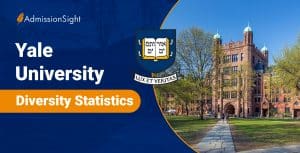
Yale Diversity Statistics: An Overview
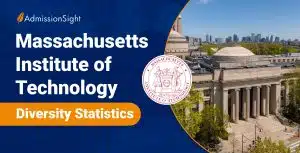
MIT Diversity Statistics: A Closer Look

Where is UC San Diego Located?
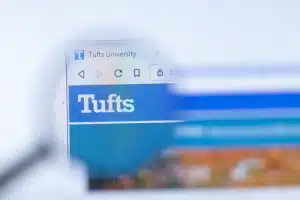
Where is Tufts University located?

Where is UIUC located?

The Hardest High School Classes

10 College Essay Topics to Avoid

10 Easiest College Classes For A Stress-Free Semester

5 Ways to Make College Essays About Tragedy More Memorable
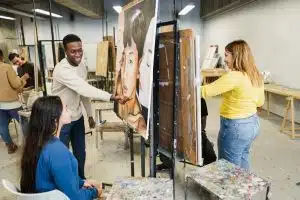
What is the Hardest Art School to Get Into?
Leave a comment cancel reply.
Your email address will not be published. Required fields are marked *
Save my name, email, and website in this browser for the next time I comment.
Recent Articles

University of Chicago Diversity Statistics:...

Everything You Need to Know...

MIT Diversity Statistics: A Closer...

Where is UC San Diego...

Sign up now to receive insights on how to navigate the college admissions process.

Admissions Counseling
- Academic & Extracurricular Profile Evaluation
Copyright © AdmissionSight 2024
Privacy Policy - Terms and Conditions

- TUTORING & TEST PREP
- TALK TO AN ADVISOR
Empowering Choices: Insights and Advice for Parents and Teens on Major and Career Exploration
Recent posts, subscribe here, more expert advice, how to make the most of a college visit.

In the last two years, colleges have continued to adapt their policies for on-campus visits. We've seen a rise in virtual visits and ebbs and flows of the traditional on-campus visit. We address both types of visit below, but as with everything these days, make sure to confirm with each college if they are open to in-person visitors at the time of your planned visit. As of January 2022, most colleges seem to remain open for on-campus tours (though most stay outdoors and avoid going into buildings). We highly encourage reserving places in advance if you're planning any spring break tours, as it's a busy time of year for visits.
What is a college visit?
The "college visit" has evolved in recent years. With the rise of virtual tours, info sessions, and college classes, there's a lot students can do from home that, once upon a time, could only be done with an in-person visit. If you're likely staying closer to home in the coming months, there's plenty to do virtually to learn about campuses, and you can read more on that here . We also strongly encourage students to do some introspection and college research from home before launching into an in-person visit because it makes visits more effective (and fun).
But once you've done that initial research and you've decided you can and do want to see some schools in person, it's then helpful to understand what you're planning a college visit for . College visits serve three important purposes:
- They help you better understand colleges in general (we call this browsing)
- They help you decide if you want to apply to a school
- They help you decide if you want to attend a school
Browsing typically takes place when students are younger – perhaps a school you stop at during a family road trip or a school close to home. This is often for students who haven't started thinking a lot about colleges. While these visits can be a fun entrée to the college journey, they often aren't as effective without a good set of questions or sense of self. Students may leave knowing a college has a rock-climbing wall but without a sense of if that's important to them. We recommend using in-person visits (especially if you're seeing more than one school) as a more focused experience, when a student can really understand what questions those visits will answer. Things like, "what does it feel like to go to school in the middle of a city" or "how much do students interact with each other?" are examples of great questions that a visit can help answer (and more great visit questions in this blog post ).
And that's when we break this down into two big categories: visits when you're deciding where to apply and visits where you're deciding to attend . It helps to pause and confirm which type of visit you're planning because what you choose to do will need to either answer: do I like this school enough to apply, or do I like this school enough to commit to attend for the coming years?
Types of in-person college visits
The first thing to know is that a college visit gets to be what you make of it: no two visits need to look alike. But we’ll break down the different types of visits and experiences you can have, and you can decide what style of visit is right for you.
Tours & info sessions
The majority of the time, families will head to the admissions office on campus, go on a tour, and attend an information session. In total, the tour and info session can be anywhere between two and three hours. Generally, we recommend doing the tour, but the info session may be repetitive based on your current research. The tour is generally led by a current student, and while they represent some students, it’s important to remember they don’t represent all students on campus.
Non-traditional campus visit suggestions
If the information session and tour combo doesn’t work as well for you or your schedule, these are some ideas for non-traditional visits that can be just as helpful in deciding on a college fit. Each campus will differ on what they allow prospective families to do (especially for current safety concerns), so make sure to check in with the admissions office before crashing a classroom or the dining hall. Note: Most colleges are currently not allowing students into buildings, so some of these may be best done in the summer or when restrictions may have loosened.
- Sit in on a lecture hall style class to see what a big class really feels like
- Grab lunch in the dining hall and (ever so tactfully) people watch
- Walk through the student union and look at flyers & clubs advertised – there’s a lot you can glean about what’s abuzz on campus
- Have a picnic on the campus lawn – most schools have a center thoroughfare that’s excellent for watching students go by or catching a Frisbee
- Attend a concert or presentation – many schools host events that are free and open to the public; check the calendar in advance to see if anyone interesting is coming to town
- Stroll the local neighborhood – whether you’re surrounded mostly by trees or a quaint downtown scene, it’s helpful to get a feel for what your college neighborhood would be
- Pick up a school newspaper to see what students are talking about
- Start a conversation with a staff member or student – you’d be surprised how many members of the community are eager to talk about their own experiences on campus
- Go to a sporting event – if you’re in town during a big rivalry game, get some tickets and scope out what it would be like to be a student there – and remember to wear the right team colors!
No matter where you go, it’s still important to check in with the admissions office, as they oftentimes have helpful self-guided walking tour booklets, lists of classes open to prospective students, or an eager current student who might want to chat about social life on campus. And, all colleges will take note that you visited, so it’s important to let them know you were there.
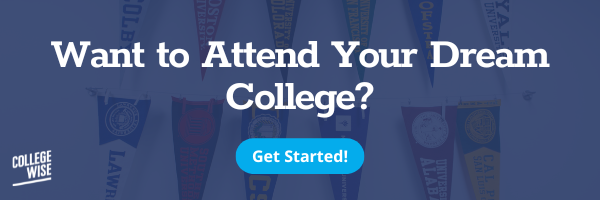
About Us: With more than twenty years of experience, Collegewise counselors and tutors are at the forefront of the ever-evolving admissions landscape. Our work has always centered on you: the student. And just like we’ve always done, we look for ways for you to be your best self - whether it’s in the classroom, in your applications or in the right-fit college environment. Our range of tools include counseling , test prep , academic tutoring , and essay management, all with the support of our proprietary platform , leading to a 4x higher than average admissions rates.
Recommended Articles
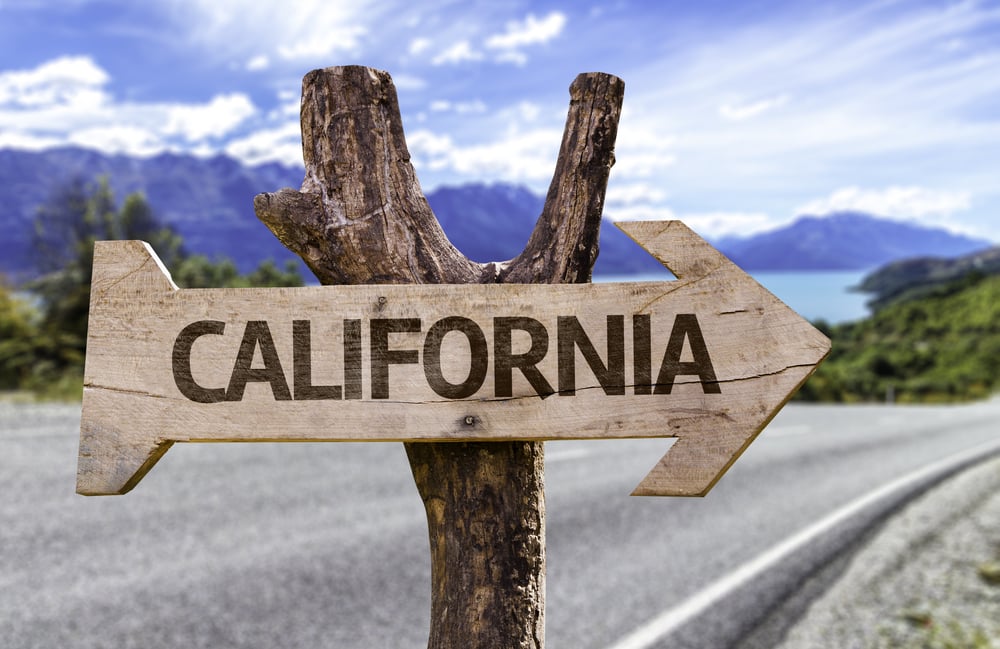
Best Colleges in California
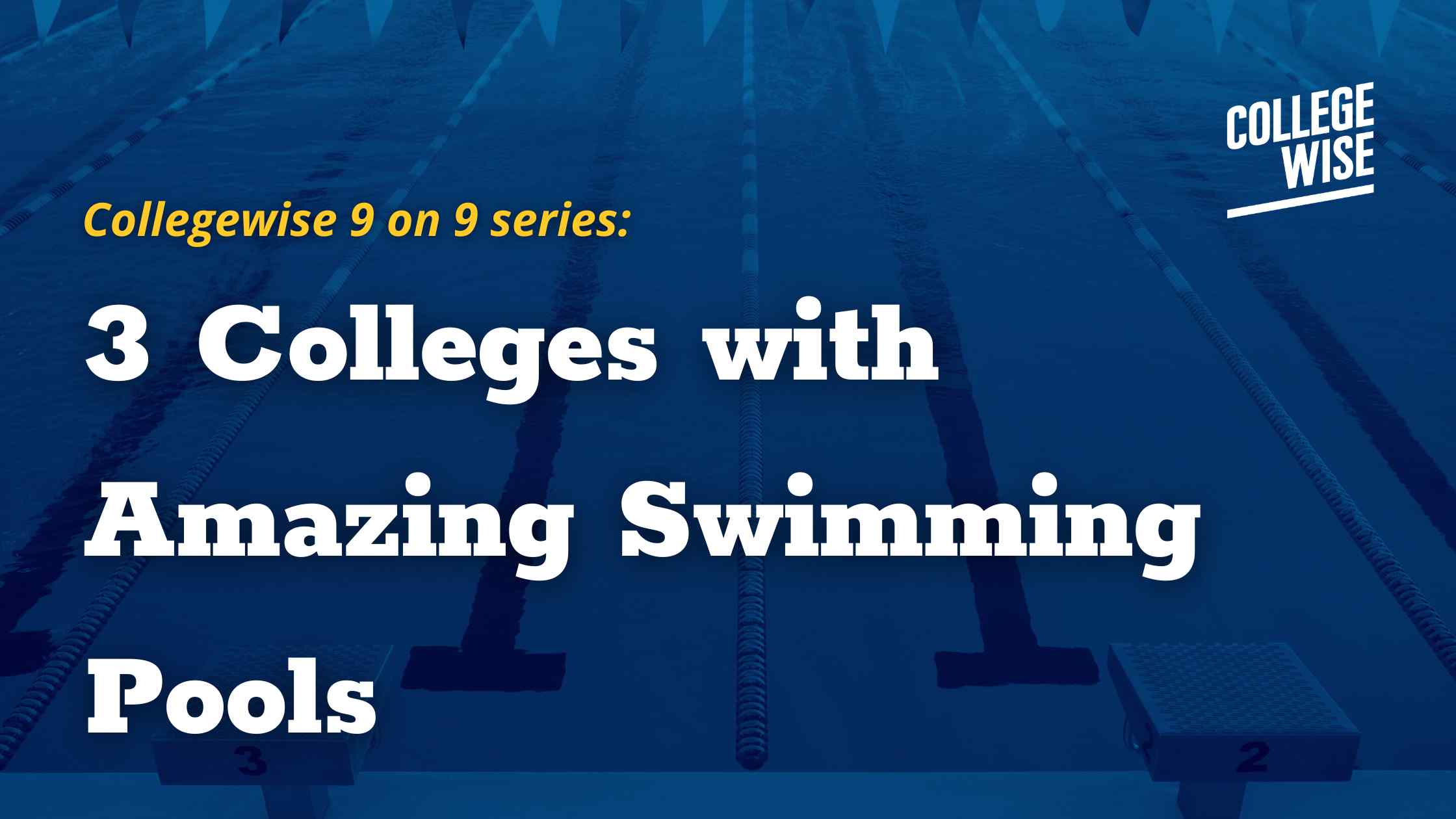
3 Colleges with Amazing Swimming Pools
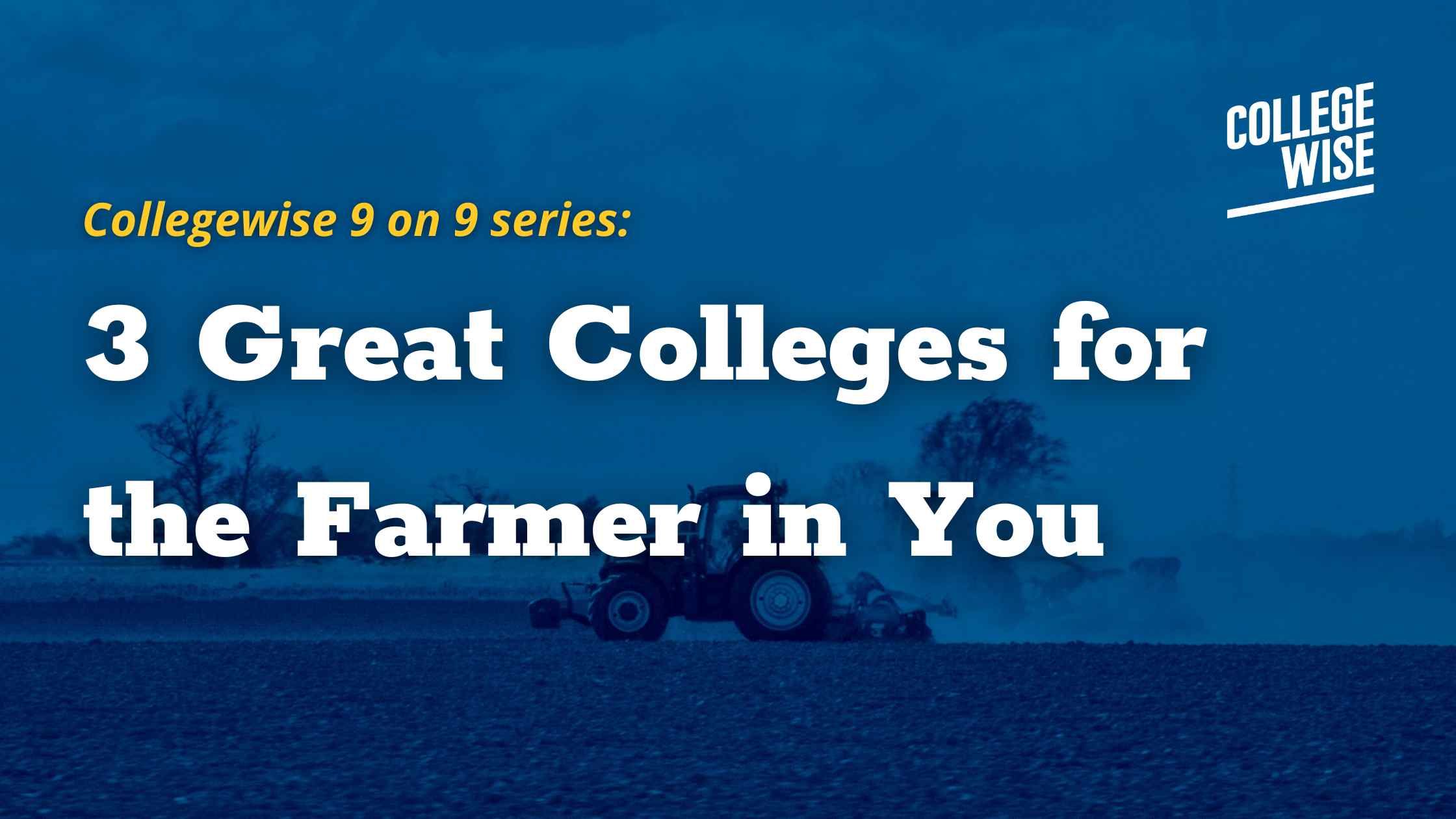
3 Great Colleges for the Farmer in You
Subscribe to email updates.
- Tutoring & Test Prep
- Our Counselors
© 2024 Collegewise. All Rights Reserved. Privacy
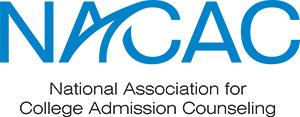
Six Steps to Get the Most Out of a Campus Visit
Why plan a visit.
Checking out a college campus near you is a great idea, even if you don't know what you want to major in or what type of college you want to attend. Campus visits can give you a sense of what might be important to you in a college and what college life is all about. Here are six suggestions for planning and getting the most out of your visit.
1. Decide Where and How.
Find out which colleges are nearby. Think about planning a visit. Your high school may have programs that arrange group trips to colleges. You could also get a group of friends together and visit the campus by car or public transportation. A family trip is another option, allowing you to involve your family in the process.
2. Prepare for Your Visit.
Before you set out, get a map of the college campus (the college's website usually has one). Pick out places of interest. Call the college's admissions office to schedule a guided campus tour. Ask about the best times to visit.
3. Take Your Own Tour.
Wandering around the campus on your own or with friends can be the best way to get a feel for the college.
4. Explore the College's Facilities.
Talk to students to find out the best places to eat and have lunch there. Visit the library. Check out the gym or the theater. Ask an admissions officer if you can tour a residence hall and a classroom. Find the spots on campus where students gather. Hang out there to get a feel for the character of the college.
5. Make Connections.
Talk to current students while on your campus visit. Ask the students at the next table or sitting on a nearby bench what they like best about the college and being a student there. Most will be eager to talk about their experiences.
6. Make Notes.
During your campus tour, write down some notes about your experience. What did you see that excited you? Do you feel you could explore the library for days? Can you picture yourself on stage in the theater? Do you want to get a closer look at the equipment in a lab? Are there aspects of the college that you don't like? If so, what are they?
When you visit a college, relax, observe, and have fun. There's no pressure.
To find the best time for your visit, read When to Visit .
For help planning your visit, read Campus Visits: Know Before You Go.
What’s a campus tour?
A campus tour is a visit by prospective students to a college or university to tour the facilities, meet faculty and students, and learn about academic programs and campus life. It helps students make informed decisions about college options by giving them firsthand experience and a chance to ask questions. A college visit is important in the college selection process. It helps students have a fulfilling and successful college experience.
Why do I need to visit a campus?
You want to be certain the college is the best place for you to live in and learn in. Meeting with admissions staff, faculty, and current students gives you valuable insights and answers to questions you may not get elsewhere. A campus visit lets you see if a college aligns with your academic, social, and extracurricular interests. In sum, a visit helps you make an informed decision.
How do I prepare for a campus visit?
To prepare for a campus visit, research the college. Make a list of questions. Take notes while engaging with faculty, staff, and students so you can remember what they said. After returning home, reflect on the experience to make sure the college campus is the right place for you.
How do I schedule a college visit?
If you want to visit a college, start by researching it online. Then contact the admissions office to find out what dates are available for campus tours. They can help you plan your itinerary, address a special request such as an in-depth tour of a science lab, and answer your questions.
What else do I need to do for upcoming college visits?
If you’re wondering how to plan college visits, here are a few things you can do. Research multiple colleges. Prioritize your top choices. To make sure you get the dates you want, plan ahead. If there’s someone you want to meet, like a coach, ask the admissions office to set up an appointment. Don't forget to schedule time to take pictures and explore the area around the campus.
Related Articles
2022-2023 Catalog
- VOL. LXVII: Accreditation
- The President's Message
- The College
Undergraduate Admission Process and Requirements
- Graduate Admission Process and Requirements
- Probationary Acceptance
- Placement Testing
- High School/College Dual Credit
- Senior Citizens
- Auditing a Class
- Academic Advising
- Privacy of Information Statement
- Americans with Disabilities Act
- Financial Aid & Financial Information
- Campus Life
- Academic Policies
- Graduate Studies
- Division of Pre-Professional Studies
- Division of Nursing
- Course Descriptions
- College Administration & Faculty
- Disclaimer, Nondiscrimination, and Compliance
- Academic Calendar
- Sponsored by the Presentation Sisters
- Addenda to 2022-2023 Catalog
- Catalog Home
- All Catalogs
UNDERGRADUATE ADMISSION PROCESS AND REQUIREMENTS
The following criteria are used to determine admission for various categories of students including First-Time Freshman, Home-School, Readmit, Transfer, Degree Completion, Unclassified, and International Students. Certain programs have additional specific criteria for admission. Refer to the respective section in this catalog for any additional requirements.
New First-Time Freshmen
First-Time Freshmen must meet one of the following requirements:
- Completion of high school diploma.**
- Completion of General Educational Development (GED) and be 18 years of age or older to meet the compulsory school attendance requirement in South Dakota.
First-Time Freshmen who have completed (1) will be admitted to the college when meeting one of the following requirements:
- A student having a minimum high school cumulative GPA of 2.75 out of a 4.0 GPA.
- A student having a minimum ACT composite score of 20 out of 36.
- A student having a minimum SAT composite score of 1040 out of 1600.
First-Time Freshmen who have completed (2) will be admitted to the college when meeting the following requirements:
- A student having a minimum cumulative GED score of 450.
First-Time Freshmen must follow these steps to complete the process:
- Submit an application for admission found at https://mypc.presentation.edu/applynow/inquiryform
- If the student is still attending high school, the transcript must include courses completed and courses in progress. Students must also arrange for a final transcript to be sent after graduation from high school with the graduation date posted.
- Submit the non-refundable application fee of $25
*Options for official transcript submission:
- Paper transcripts can be accepted as official provided they are either mailed or personally delivered to the Admissions Office in the original, sealed envelope from the school.
- Electronic transcripts can be accepted as official provided they are emailed directly from the school or are submitted via an electronic transcript service to the Admissions Office via the domain @presentation.edu
All records submitted, filed, and accumulated in the Admissions and Registrar's Offices become the property of the College.
Upon receipt of these items, the Admissions Office will notify applicants of acceptance, provisional acceptance, probationary acceptance, or denial of acceptance into the College.
**The Admissions department may review the transcript for validity at its discretion. The Admissions department will consult with the Department of Education website for that particular state to ensure that the student graduated from an accredited high school.
Home-Schooled Students
Home-Schooled Students must meet one of the following requirements:
Home-Schooled Students who have completed (1) will be admitted to the college when meeting one of the following requirements:
Home-Schooled Students who have completed (2) will be admitted to the college when meeting the following requirements:
Home-Schooled Students must follow these steps to complete the process:
- Transcript can be requested from the local home schooling guild or association school. If not available, primary educator-prepared transcripts, which detail course descriptions, proficiency levels, and textbooks used, are acceptable. If the student is still attending high school, the transcript must include courses completed and courses in progress. Students must also arrange for a final transcript to be sent after graduation from high school with the graduation date posted.
**The Admissions department may review the transcript for validity at their discretion. The Admissions department will consult with the Department of Education website for that particular state to ensure that the student graduated from an accredited high school.
Readmit Students
Readmit Students must meet the following requirement:
- Readmit students are subject to entrance requirements and major requirements as stated in the College Catalog in service at the time of reentry. Students who graduate from Presentation College with a prior degree or certificate and reenter the following semester are also required to reapply for admission to the College.
Readmit Students must follow these steps to complete the process:
- Submit any official* college or university transcripts since last admission, whether or not credit was received. Readmit Students must have a minimum cumulative grade point average (GPA) of 2.00 on a 4.00 scale from their previous Presentation College transcript.
- Submit the non-refundable application fee of $25.
- Other requirements, if applicable.
Transfer Students
Transfer Students must meet the following requirement:
- If a transfer student does not have 24 or more college credits they will be admitted as a first-time freshman, but have transfer status.
Transfer Students must follow these steps to complete the process:
- Submit all official* college or university transcripts. Transfer Students must have a minimum cumulative grade point average (GPA) of 2.00 on a 4.00 scale once all transcripts are received.
If students are currently enrolled at another institution, partial transcripts may be submitted and considered for provisional admission until the final official transcripts arrive. Please contact the Admissions Office regarding transcript evaluations. All credits attempted (except remedial courses) will be calculated into the admission GPA.
Degree Completion Students
Degree Completion Students must meet the following requirement:
- Have completed an Associate’s degree or higher, and seeking to enter a baccalaureate program at Presentation College.
Degree Completion Students must follow these steps to complete the process:
Unclassified Students
Students who wish to enroll without pursuing a program or degree from Presentation College are considered unclassified. The Registrar will advise and register unclassified students. A maximum of 6 credit hours per semester is permitted on a space available basis with a total maximum of 12 credit hours taken as an unclassified student while at Presentation College. Courses taken by unclassified students may include general or select department coursework. Unclassified students do not qualify for federal, state, or institutional financial aid.
If unclassified students later wish to become degree-seeking, the entire College admission process must be completed.
International Students
Presentation College invites and encourages international students to apply for admission. The College is authorized under Federal law to enroll non-immigrant alien students.
First Time Freshmen International applicants must provide the Admissions Office with the following:
1. Proof of High school diploma and high school transcript. International high school (secondary) transcripts can be evaluated internally by Presentation College, or externally by an accredited evaluation service. Transcripts must be submitted in the original language and translated into English if sent directly to the admissions office. Presentation College reserves the right to require a third-party agency to evaluate the transcript. High School Transcripts must have a minimum 2.0 GPA on a 4.0 scale.
2. A completed application form due by July 1 for fall semester; November 1 for spring semester.
3. Non-refundable application fee of $25.
4. Meet minimum English proficiency standards. Methods for demonstrating minimum English proficiency standards are listed below.
5. Completed Declaration of Finances form and an official bank statement.
6. Photocopy of current passport and photocopy of F-1 VISA once obtained.
Co llege or University Transfer* International applicants must provide the Admissions Office with the following:
1. Submit an application for admission found at www.presentation.edu/admission/apply/
2. Submit all official* college or university transcripts. Transfer Students must have a minimum cumulative grade point average (GPA) of 2.00 on a 4.00 scale once all transcripts are received.
3. Submit the non-refundable application fee of $25
4. Meet minimum English Proficiency standards. Methods for demonstrating minimum English proficiency standards are listed below.
5. Completed Declaration of Finances form and an official bank statement.
6. Photocopy of current passport and photocopy of F-1 VISA once obtained.
*To be considered for admission to PC as an international transfer student, a minimum of 24 completed semester credits at a cumulative 2.00 grade point average (GPA), on a 4.00 scale. Applicants who have postsecondary transcripts from an international institution and request consideration of credits earned for acceptance to Presentation College must submit the transcripts to a translation company in the United States for an academic evaluation. The cost of the evaluation is the responsibility of the student. An evaluation is subject to policies as printed in this catalog.
Declaration of Finances and Bank Statement
Since financial assistance for international students is extremely limited, applicants must demonstrate evidence of ability to meet the costs of the chosen program by completing a Declaration of Finances form. Students will be required to utilize their home banking institution to certify available funding. Once adequate financial resources are confirmed, an application is completed, and all other requirements are on file, applicants will be considered for admission. If accepted, an official I-20 form will be sent to the student. Arrangements for obtaining a VISA may then be made by the accepted student at the American Embassy or Consulate in the student's home country.
All required application materials must be received by July 15 for fall semester and November 15 for spring semester.
IMPORTANT: All fees, deposits, tuition, housing charges, etc., are payable in U.S. funds.
Non-Resident Alien and ESL Students
Non-resident alien students or students whose native language is not English must provide the Admissions Office with the following:
1. A completed application form
2. Non-refundable application fee of $25
3. Meet minimum English proficiency standards. Methods for demonstrating minimum English proficiency standards are listed below.
4. Students who have completed high school in the United States must meet the minimum ACT or SAT exam requirements.
English Proficiency Standards
There are two ways to meet Presentation College’s English language proficiency requirement:
Presentation College accepts scores from the following exams. Scores must be sent directly to Presentation College from the testing agency in order to be counted as official. Score reports can be sent electronically or by postal mail to the Admissions Office. Scores must be less than two years old to be considered for admissions.
TOEFL score (Test of English as a Foreign Language): 65 web-based, 525 paper and pencil ( PC's TOEFL code: 6582)
IELTS International English Language Testing System: 5.5
Pearson PTE Academic: 46
SAT: 490 Evidenced-Based Reading and Writing sub score
ACT: 18 English sub score
- Language Waivers:
There are several ways to qualify for a waiver. Students will not need to provide an exam score if they meet any of the following criteria:
- Waiver Option A – If the student has attended a U.S. high school or an international high school that is regionally accredited in the United States for two or more years
- Waiver Option B – If the student has an associate of arts or sciences degree or a bachelor’s degree from a regionally accredited university with a cumulative 2.00 GPA
- Waiver Option C – If the student has attended a U.S. regionally accredited college or university, has completed the transferable equivalents of PC’s English Composition 113 with a 2.00 or above grade point average for each course at the time of application, and has 24 semester college level admission credits completed by the beginning of classes for the term they are applying
- Waiver Option D – If the student has taken the ACCUPLACER and received the minimum score requirement for PC’s English Composition 113
- Waiver Option E – If the student is a citizen from one of the following countries AND their primary language is English: Antigua and Barbuda, Anguilla, Australia, Bahamas, Barbados, Belize, British Virgin Islands, Canada, Cook Islands, Dominica, Fiji, Gambia, Ghana, Grenada, Guyana, Ireland, Jamaica, Kiribati, Liberia, Malta, Marshall Islands, Micronesia, Montserrat, New Zealand, Nigeria, Pitcairn Islands, Saint Helena, Saint Kitts and Nevis, Saint Lucia, Saint Vincent and the Grenadines, Samoa, Singapore, South Africa, Trinidad and Tobago, Turks and Caicos Islands, Uganda, United Kingdom (England, Scotland, Wales, Northern Ireland), Zambia, or Zimbabwe (provide proof of citizenship to have waiver applied)
- Wavier Option F – If the student was schooled outside the United States at a school where the language of instruction was English (student must provide an official letter from the school stating English was the language of instruction while they attended)
- Waiver Option G – If none of the above waivers apply, and the student was unable to take the ACT, SAT, TOEFL, IELTS, or Pearson PTE Academic due to temporary test restrictions due to the COVID-19 pandemic, a committee will speak with the student on the phone and ask a series of questions, gathering English Proficiency skills based on a phone interview.
A $100 tuition deposit is required prior to registration for classes. The deposit is non-refundable.
Application Fee Waivers
This option is available for any student applying to Presentation College that has their $25 application fee waived. Fee waiver codes may be given to students and used for the purposes of student recruitment at the discretion of the Director of Admissions.
Up one level

About Stanford GSB
- The Leadership
- Dean’s Updates
- School News & History
- Commencement
- Business, Government & Society
- Centers & Institutes
- Center for Entrepreneurial Studies
- Center for Social Innovation
- Stanford Seed
About the Experience
- Learning at Stanford GSB
- Experiential Learning
- Guest Speakers
- Entrepreneurship
- Social Innovation
- Communication
- Life at Stanford GSB
- Collaborative Environment
- Activities & Organizations
- Student Services
- Housing Options
- International Students
Full-Time Degree Programs
- Why Stanford MBA
- Academic Experience
- Financial Aid
- Why Stanford MSx
- Research Fellows Program
- See All Programs
Non-Degree & Certificate Programs
- Executive Education
- Stanford Executive Program
- Programs for Organizations
- The Difference
- Online Programs
- Stanford LEAD
- Seed Transformation Program
- Aspire Program
- Seed Spark Program
- Faculty Profiles
- Academic Areas
- Awards & Honors
- Conferences
Faculty Research
- Publications
- Working Papers
- Case Studies
Research Hub
- Research Labs & Initiatives
- Business Library
- Data, Analytics & Research Computing
- Behavioral Lab
Research Labs
- Cities, Housing & Society Lab
- Golub Capital Social Impact Lab
Research Initiatives
- Corporate Governance Research Initiative
- Corporations and Society Initiative
- Policy and Innovation Initiative
- Rapid Decarbonization Initiative
- Stanford Latino Entrepreneurship Initiative
- Value Chain Innovation Initiative
- Venture Capital Initiative
- Career & Success
- Climate & Sustainability
- Corporate Governance
- Culture & Society
- Finance & Investing
- Government & Politics
- Leadership & Management
- Markets and Trade
- Operations & Logistics
- Opportunity & Access
- Technology & AI
- Opinion & Analysis
- Email Newsletter
Welcome, Alumni
- Communities
- Digital Communities & Tools
- Regional Chapters
- Women’s Programs
- Identity Chapters
- Find Your Reunion
- Career Resources
- Job Search Resources
- Career & Life Transitions
- Programs & Webinars
- Career Video Library
- Alumni Education
- Research Resources
- Volunteering
- Alumni News
- Class Notes
- Alumni Voices
- Contact Alumni Relations
- Upcoming Events
Admission Events & Information Sessions
- MBA Program
- MSx Program
- PhD Program
- Alumni Events
- All Other Events
10 Tips For Giving Effective Virtual Presentations
What to know before you go live.
September 26, 2016

Presenting online? Try these suggestions to improve your results. | Illustration by Tricia Seibold
As audiences go global and you need to reach more people through technology (including webinars, conference calls and teleconference), you must consider the challenges to connecting with a virtual audience. Here I pinpoint 10 valuable best practices to ensure you communicate successfully.
1. Be Brief
Audiences begin to lose attention after roughly 10 minutes of hearing from the same presenter. If you have more than 10 minutes of content, use interactive activities to keep your audience engaged (for example, take a poll, give quizzes, or ask audience members for their opinions via chat).
2. Be Simple
Keep slides simple — avoid too many words, graphics and animation features. Less is definitely more!

Light yourself well | Illustration by Tricia Seibold
3. Be a TV Personality
Look straight into your camera, not the screen. Wear clothing that is neutral in color (no plaids or stripes). Light yourself well and from above. Be mindful of what appears behind you in the background. Invest in a good microphone.
4. Be Standing
Even though your audience cannot see you, stand when you present. This allows you to stay focused and use good presentation delivery skills such as belly breathing, vocal variety, and pausing.
5. Be Prepared
Practice delivering your presentation with your technology in advance of your talk. Make sure all of the features of the technology work. Record your practice using the recording feature of your tool. Watch and listen to learn what works and what you can improve.
6. Be Assisted
Have someone available to deal with technical issues and to field email/text questions. Also, if you have multiple remote audience members in one location, be sure to pick one of them to be your “eyes and ears.” Ask them to queue up questions and facilitate discussion on your behalf.
7. Be Specific
Ask pointed questions to avoid too many people answering at once. For example, rather than ask, “Are there any questions?” try “Who has a question about the solution I provided?” Set a ground rule that people state their names prior to speaking.

Imagine your audience | Illustration by Tricia Seibold
8. Be Synchronized
Transitions are critical. You must connect what you just said to what is coming next when you move from point to point. Transitions between topics and slides are good opportunities to get people reengaged to your talk.
9. Be Connected
Imagine your audience even though you can’t see them. You can place pictures of audience members behind your camera so you can look at people as you present.
10. Be Early
Encourage your audience to access your call or webinar in advance of the start time so you can iron out any technical issues in advance and get them familiar with the technology.
Matt Abrahams is a Stanford GSB organizational behavior lecturer, author, and communications coach.
For media inquiries, visit the Newsroom .
Explore More
Class takeaways — how to run a meeting effectively, conviction and compassion: how to have hard conversations, communicating through conflict: how to get along with anyone, editor’s picks.

April 04, 2016 A Big Data Approach to Public Speaking Key takeaways from analyzing 100,000 presentations.
November 19, 2014 Matt Abrahams: The Power of the Paraphrase An expert on public speaking shows how paraphrasing can help you navigate tricky communication situations.
- Priorities for the GSB's Future
- See the Current DEI Report
- Supporting Data
- Research & Insights
- Share Your Thoughts
- Search Fund Primer
- Teaching & Curriculum
- Affiliated Faculty
- Faculty Advisors
- Louis W. Foster Resource Center
- Defining Social Innovation
- Impact Compass
- Global Health Innovation Insights
- Faculty Affiliates
- Student Awards & Certificates
- Changemakers
- Dean Jonathan Levin
- Dean Garth Saloner
- Dean Robert Joss
- Dean Michael Spence
- Dean Robert Jaedicke
- Dean Rene McPherson
- Dean Arjay Miller
- Dean Ernest Arbuckle
- Dean Jacob Hugh Jackson
- Dean Willard Hotchkiss
- Faculty in Memoriam
- Stanford GSB Firsts
- Class of 2024 Candidates
- Certificate & Award Recipients
- Dean’s Remarks
- Keynote Address
- Teaching Approach
- Analysis and Measurement of Impact
- The Corporate Entrepreneur: Startup in a Grown-Up Enterprise
- Data-Driven Impact
- Designing Experiments for Impact
- Digital Marketing
- The Founder’s Right Hand
- Marketing for Measurable Change
- Product Management
- Public Policy Lab: Financial Challenges Facing US Cities
- Public Policy Lab: Homelessness in California
- Lab Features
- Curricular Integration
- View From The Top
- Formation of New Ventures
- Managing Growing Enterprises
- Startup Garage
- Explore Beyond the Classroom
- Stanford Venture Studio
- Summer Program
- Workshops & Events
- The Five Lenses of Entrepreneurship
- Leadership Labs
- Executive Challenge
- Arbuckle Leadership Fellows Program
- Selection Process
- Training Schedule
- Time Commitment
- Learning Expectations
- Post-Training Opportunities
- Who Should Apply
- Introductory T-Groups
- Leadership for Society Program
- Certificate
- 2024 Awardees
- 2023 Awardees
- 2022 Awardees
- 2021 Awardees
- 2020 Awardees
- 2019 Awardees
- 2018 Awardees
- Social Management Immersion Fund
- Stanford Impact Founder Fellowships
- Stanford Impact Leader Prizes
- Social Entrepreneurship
- Stanford GSB Impact Fund
- Economic Development
- Energy & Environment
- Stanford GSB Residences
- Environmental Leadership
- Stanford GSB Artwork
- A Closer Look
- California & the Bay Area
- Voices of Stanford GSB
- Business & Beneficial Technology
- Business & Sustainability
- Business & Free Markets
- Business, Government, and Society Forum
- Get Involved
- Second Year
- Global Experiences
- JD/MBA Joint Degree
- MA Education/MBA Joint Degree
- MD/MBA Dual Degree
- MPP/MBA Joint Degree
- MS Computer Science/MBA Joint Degree
- MS Electrical Engineering/MBA Joint Degree
- MS Environment and Resources (E-IPER)/MBA Joint Degree
- Academic Calendar
- Clubs & Activities
- LGBTQ+ Students
- Military Veterans
- Minorities & People of Color
- Partners & Families
- Students with Disabilities
- Student Support
- Residential Life
- Student Voices
- MBA Alumni Voices
- A Week in the Life
- Career Support
- Employment Outcomes
- Cost of Attendance
- Knight-Hennessy Scholars Program
- Yellow Ribbon Program
- BOLD Fellows Fund
- Application Process
- Loan Forgiveness
- Contact the Financial Aid Office
- Evaluation Criteria
- GMAT & GRE
- English Language Proficiency
- Personal Information, Activities & Awards
- Professional Experience
- Letters of Recommendation
- Optional Short Answer Questions
- Application Fee
- Reapplication
- Deferred Enrollment
- Joint & Dual Degrees
- Entering Class Profile
- Event Schedule
- Ambassadors
- New & Noteworthy
- Ask a Question
- See Why Stanford MSx
- Is MSx Right for You?
- MSx Stories
- Leadership Development
- How You Will Learn
- Admission Events
- Personal Information
- GMAT, GRE & EA
- English Proficiency Tests
- Career Change
- Career Advancement
- Daycare, Schools & Camps
- U.S. Citizens and Permanent Residents
- Requirements
- Requirements: Behavioral
- Requirements: Quantitative
- Requirements: Macro
- Requirements: Micro
- Annual Evaluations
- Field Examination
- Research Activities
- Research Papers
- Dissertation
- Oral Examination
- Current Students
- Education & CV
- International Applicants
- Statement of Purpose
- Reapplicants
- Application Fee Waiver
- Deadline & Decisions
- Job Market Candidates
- Academic Placements
- Stay in Touch
- Faculty Mentors
- Current Fellows
- Standard Track
- Fellowship & Benefits
- Group Enrollment
- Program Formats
- Developing a Program
- Diversity & Inclusion
- Strategic Transformation
- Program Experience
- Contact Client Services
- Campus Experience
- Live Online Experience
- Silicon Valley & Bay Area
- Digital Credentials
- Faculty Spotlights
- Participant Spotlights
- Eligibility
- International Participants
- Stanford Ignite
- Frequently Asked Questions
- Operations, Information & Technology
- Organizational Behavior
- Political Economy
- Classical Liberalism
- The Eddie Lunch
- Accounting Summer Camp
- California Econometrics Conference
- California Quantitative Marketing PhD Conference
- California School Conference
- China India Insights Conference
- Homo economicus, Evolving
- Political Economics (2023–24)
- Scaling Geologic Storage of CO2 (2023–24)
- A Resilient Pacific: Building Connections, Envisioning Solutions
- Adaptation and Innovation
- Changing Climate
- Civil Society
- Climate Impact Summit
- Climate Science
- Corporate Carbon Disclosures
- Earth’s Seafloor
- Environmental Justice
- Operations and Information Technology
- Organizations
- Sustainability Reporting and Control
- Taking the Pulse of the Planet
- Urban Infrastructure
- Watershed Restoration
- Junior Faculty Workshop on Financial Regulation and Banking
- Ken Singleton Celebration
- Marketing Camp
- Quantitative Marketing PhD Alumni Conference
- Presentations
- Theory and Inference in Accounting Research
- Stanford Closer Look Series
- Quick Guides
- Core Concepts
- Journal Articles
- Glossary of Terms
- Faculty & Staff
- Researchers & Students
- Research Approach
- Charitable Giving
- Financial Health
- Government Services
- Workers & Careers
- Short Course
- Adaptive & Iterative Experimentation
- Incentive Design
- Social Sciences & Behavioral Nudges
- Bandit Experiment Application
- Conferences & Events
- Reading Materials
- Energy Entrepreneurship
- Faculty & Affiliates
- SOLE Report
- Responsible Supply Chains
- Current Study Usage
- Pre-Registration Information
- Participate in a Study
- Founding Donors
- Location Information
- Participant Profile
- Network Membership
- Program Impact
- Collaborators
- Entrepreneur Profiles
- Company Spotlights
- Seed Transformation Network
- Responsibilities
- Current Coaches
- How to Apply
- Meet the Consultants
- Meet the Interns
- Intern Profiles
- Collaborate
- Research Library
- News & Insights
- Program Contacts
- Databases & Datasets
- Research Guides
- Consultations
- Research Workshops
- Career Research
- Research Data Services
- Course Reserves
- Course Research Guides
- Material Loan Periods
- Fines & Other Charges
- Document Delivery
- Interlibrary Loan
- Equipment Checkout
- Print & Scan
- MBA & MSx Students
- PhD Students
- Other Stanford Students
- Faculty Assistants
- Research Assistants
- Stanford GSB Alumni
- Telling Our Story
- Staff Directory
- Site Registration
- Alumni Directory
- Alumni Email
- Privacy Settings & My Profile
- Success Stories
- The Story of Circles
- Support Women’s Circles
- Stanford Women on Boards Initiative
- Alumnae Spotlights
- Insights & Research
- Industry & Professional
- Entrepreneurial Commitment Group
- Recent Alumni
- Half-Century Club
- Fall Reunions
- Spring Reunions
- MBA 25th Reunion
- Half-Century Club Reunion
- Faculty Lectures
- Ernest C. Arbuckle Award
- Alison Elliott Exceptional Achievement Award
- ENCORE Award
- Excellence in Leadership Award
- John W. Gardner Volunteer Leadership Award
- Robert K. Jaedicke Faculty Award
- Jack McDonald Military Service Appreciation Award
- Jerry I. Porras Latino Leadership Award
- Tapestry Award
- Student & Alumni Events
- Executive Recruiters
- Interviewing
- Land the Perfect Job with LinkedIn
- Negotiating
- Elevator Pitch
- Email Best Practices
- Resumes & Cover Letters
- Self-Assessment
- Whitney Birdwell Ball
- Margaret Brooks
- Bryn Panee Burkhart
- Margaret Chan
- Ricki Frankel
- Peter Gandolfo
- Cindy W. Greig
- Natalie Guillen
- Carly Janson
- Sloan Klein
- Sherri Appel Lassila
- Stuart Meyer
- Tanisha Parrish
- Virginia Roberson
- Philippe Taieb
- Michael Takagawa
- Terra Winston
- Johanna Wise
- Debbie Wolter
- Rebecca Zucker
- Complimentary Coaching
- Changing Careers
- Work-Life Integration
- Career Breaks
- Flexible Work
- Encore Careers
- Join a Board
- D&B Hoovers
- Data Axle (ReferenceUSA)
- EBSCO Business Source
- Global Newsstream
- Market Share Reporter
- ProQuest One Business
- RKMA Market Research Handbook Series
- Student Clubs
- Entrepreneurial Students
- Stanford GSB Trust
- Alumni Community
- How to Volunteer
- Springboard Sessions
- Consulting Projects
- 2020 – 2029
- 2010 – 2019
- 2000 – 2009
- 1990 – 1999
- 1980 – 1989
- 1970 – 1979
- 1960 – 1969
- 1950 – 1959
- 1940 – 1949
- Service Areas
- ACT History
- ACT Awards Celebration
- ACT Governance Structure
- Building Leadership for ACT
- Individual Leadership Positions
- Leadership Role Overview
- Purpose of the ACT Management Board
- Contact ACT
- Business & Nonprofit Communities
- Reunion Volunteers
- Ways to Give
- Fiscal Year Report
- Business School Fund Leadership Council
- Planned Giving Options
- Planned Giving Benefits
- Planned Gifts and Reunions
- Legacy Partners
- Giving News & Stories
- Giving Deadlines
- Development Staff
- Submit Class Notes
- Class Secretaries
- Board of Directors
- Health Care
- Sustainability
- Class Takeaways
- All Else Equal: Making Better Decisions
- If/Then: Business, Leadership, Society
- Grit & Growth
- Think Fast, Talk Smart
- Spring 2022
- Spring 2021
- Autumn 2020
- Summer 2020
- Winter 2020
- In the Media
- For Journalists
- DCI Fellows
- Other Auditors
- Academic Calendar & Deadlines
- Course Materials
- Entrepreneurial Resources
- Campus Drive Grove
- Campus Drive Lawn
- CEMEX Auditorium
- King Community Court
- Seawell Family Boardroom
- Stanford GSB Bowl
- Stanford Investors Common
- Town Square
- Vidalakis Courtyard
- Vidalakis Dining Hall
- Catering Services
- Policies & Guidelines
- Reservations
- Contact Faculty Recruiting
- Lecturer Positions
- Postdoctoral Positions
- Accommodations
- CMC-Managed Interviews
- Recruiter-Managed Interviews
- Virtual Interviews
- Campus & Virtual
- Search for Candidates
- Think Globally
- Recruiting Calendar
- Recruiting Policies
- Full-Time Employment
- Summer Employment
- Entrepreneurial Summer Program
- Global Management Immersion Experience
- Social-Purpose Summer Internships
- Process Overview
- Project Types
- Client Eligibility Criteria
- Client Screening
- ACT Leadership
- Social Innovation & Nonprofit Management Resources
- Develop Your Organization’s Talent
- Centers & Initiatives
- Student Fellowships
Search Colleges
Presentation college virtual tour, are you applying to presentation college explore the campus using the virtual tour below., what's in it for me, virtual tour, using the map, panoramic view, continue your research on presentation college.

College Visit Checklist
This post may contain affiliate links provided for your convenience. We earn commissions if you shop through the links on this page. I am also an Amazon Associate and earn from qualifying purchases Read my full disclosure policy.
Sharing is caring!
First published April 12, 2013. Updated May 25, 2022
The college search process is daunting. Using a college visit checklist is a big help in knowing what to look for. The insight you purposefully gather will help you make an informed decision and the best decision for you.
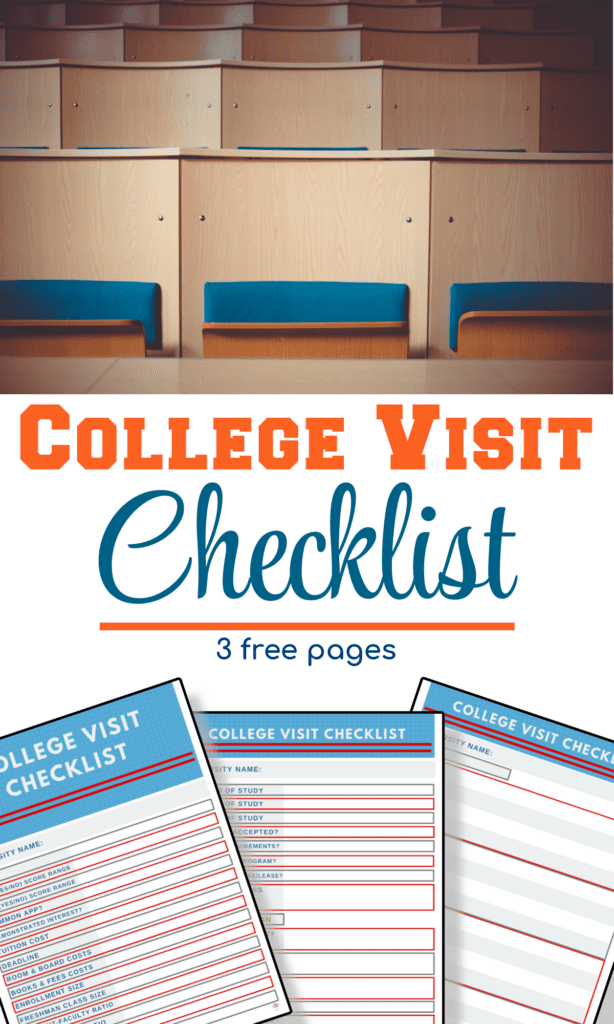
Last summer we spontaneously took two college tours just because we were in the vicinity of those colleges. We immediately realized how important it is to prepare for your college tours. You can’t be a spectator in this process and gain anything of value. So to make these visits be more productive I just had to make a College Visit Checklist , of course.
How Should I Prepare for a College Visit?
- Spend time on the school’s website and learn more about the school and how it meets your unique interests and needs.
- Think about what is important to you in selecting a university.
- Research what programs of study are available at the university that may interest you.
- Print out and review the College Visit Checklist in preparation for your visit.
- Be prepared to take notes. Trust me, you’re not going to remember everything after the tour if you don’t get it down in writing.
- Talk to friends, teachers and neighbors who attended the university.
Using a prepared college visit worksheet helps your student pay attention during the visit and focus on what’s important. It also helps her ask specific questions if topics important to her are not covered in the presentation. There’s also room to add information that we didn’t anticipate (which was a lot!).
Print out your copy of the university visit checklist. Yes, a printed checklist is old school, but research has shown that writing information down helps the brain process it more effectively than typing it on a screen.
Whether you take notes on your phone or by hand, it’s a good idea to arrive for college visits with a prepared list of questions and to record the answers and information you learn.
We found it helpful to look up some of the general information about the school on the school’s website before the visit. Using that information, we got started on filling out the checklist. That research provided a quick orientation to the school and allowed my daughter to focus more on the presentation for answers to specific questions that were important to her.
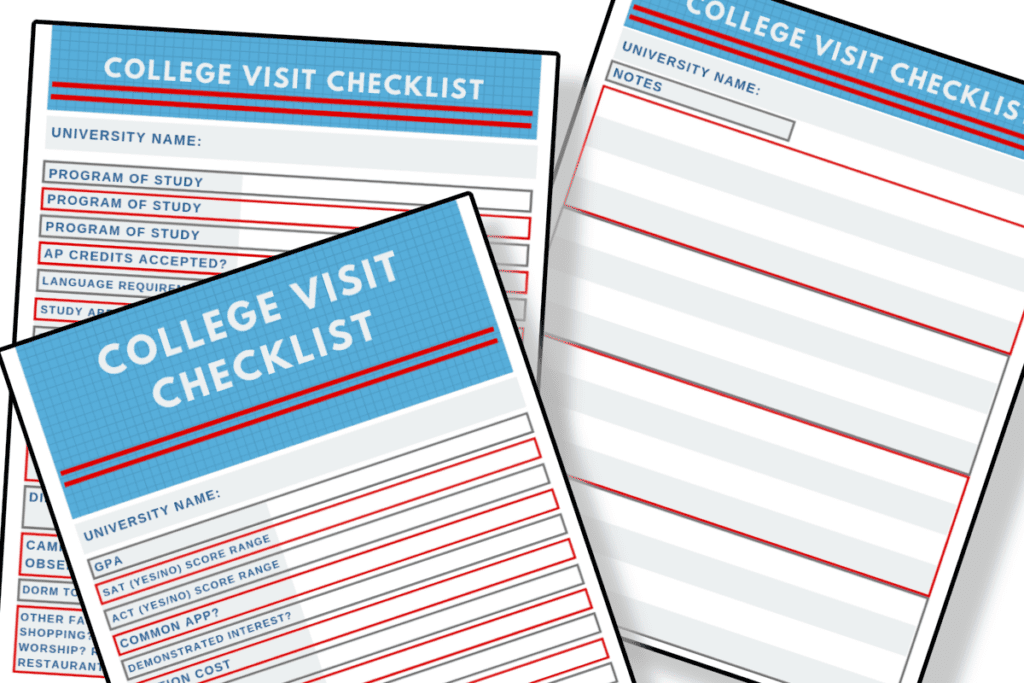
To get your free College Visit Checklist, simply sign up for our free newsletter below. The free checklist will be sent straightaway to your inbox.
As a special opportunity, if you’re sending college care packages, you definitely want to check out this limited time low price offer on 48-pages of Creative Care Package Notes and Signs filled with holiday and colored themed care package notes and candy themed tags.

Sign up for campus visits at as many colleges as possible.
- If you’re unable to visit a college in person, most offer a virtual tour option.
- Sign up for both the group information session with the admissions rep and also a campus tour with a student tour guide.
- It’s a great way to get a feel for college life at each particular college.
- After the official tour, be sure to take time to wander around the college campus on your own with a campus map.
What questions should I ask at a college visit?
- Requirements of specific programs
- Opportunities to work with professors or on research projects
- Access to specialized facilities or equipment
- Internship opportunities and requirements
- Study abroad opportunities and requirements
- Specific questions for an admissions officer about your application
- Dorms and dorm rooms
- Dining halls, food options and accommodations for dietary restrictions and food allergies
- Classrooms, labs and access to specific equipment
- Student Union
- Medical clinic
- Parking and parking passes
- Popular activities
- Campus life traditions
- Restaurants on campus and off
- Off campus activities and shopping
- Campus safety
- Access to public transportation
- Create your own list of questions based on your unique needs and interests. Talk to current students, if you feel inclined. A good opening question is, “What are the best things about going to this school?”
You can do online research and gain a lot of information before your visit. Look up
- Information on the college career center page
- Campus newspaper and student newspapers
- Check the school’s accounts
- Check school related hashtags

We visited 3 universities in 2 days. We heard presentations and took the tours at each of the three College Visit Checklist. We were inundated with a lot of information and details. To keep track of the information unique to each school, it was key to have a college visit checklist for each school and fill it out during or immediately after each visit.

I realized that carrying the loose pages of checklists around wouldn’t work. I found a sturdy folder to hold the checklists and a pen . Having the folder was also helpful for holding brochures, handouts and business cards we picked up at each college. The folder and the checklist worked well for us on the visits.
Since we took the time and made the effort to drive 10 hours each way on this trip, I wanted to make sure that my daughter (well, really all of us) got the most out of each college visit. And the checklist helped us do just that.
I can’t overstate the benefits of a college visit checklist in helping your student gather the information needed to make an informed decision on the best choice for her and her future.
Top College Tips
Top Tips for College Success – 40+ Tips for College Success for students and parents . Everything you need to know to prepare your student and your family for college.

College Tour How to Prepare – How to Prepare to get enjoyment & information from a college tour visit. Be prepared so you can obtain the critical information you need.
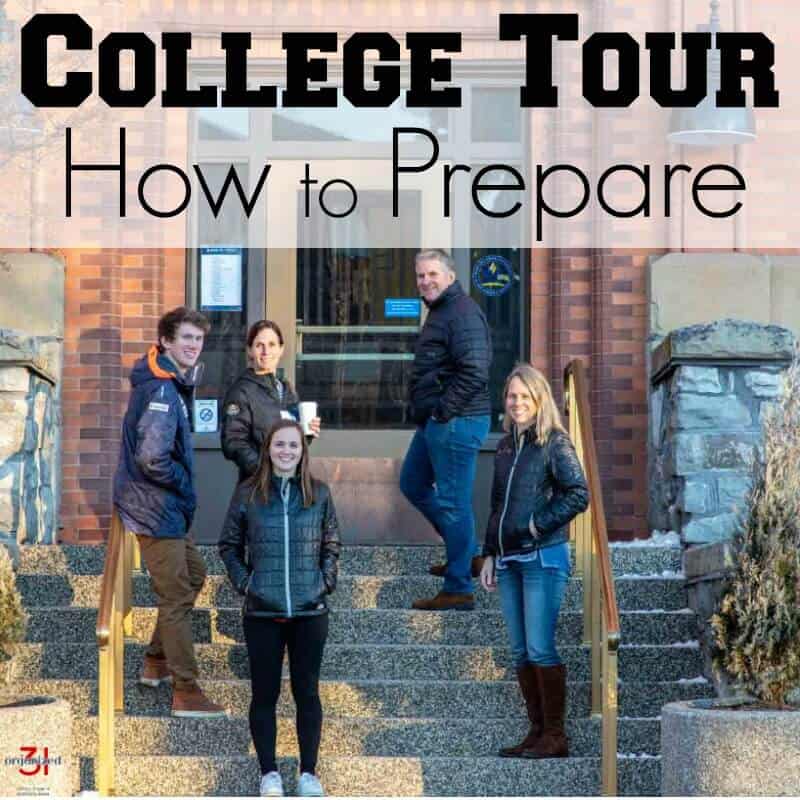
How Much Does It Cost to Apply to College – How Much Does it Cost to Apply to College? 20+ expenses and tips I’ve found from sending three children to college.
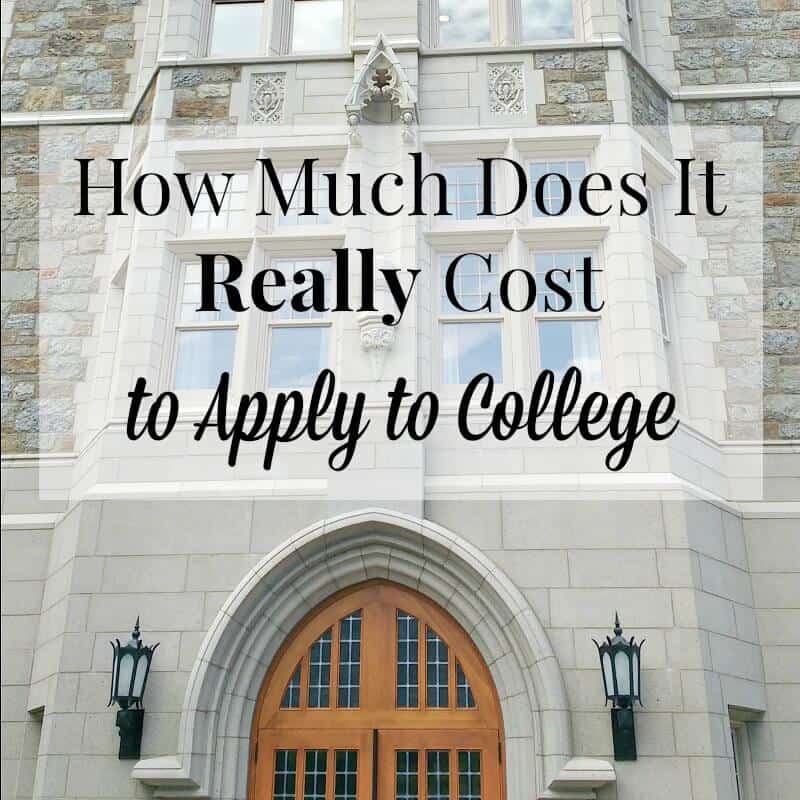
Dorm Move-In Day Tips – Dorm Move -In Day doesn’t have to be stressful or painful. Use these tips for parents to make college move -in day easier. I’ve moved three children into dorms by myself and these tips are a huge help.

7 Simple Tips for College Students – Entering college is both exciting and daunting. These 7 simple tips for college freshman are no-cost and will help make college life easier, more organized, better and more enjoyable.
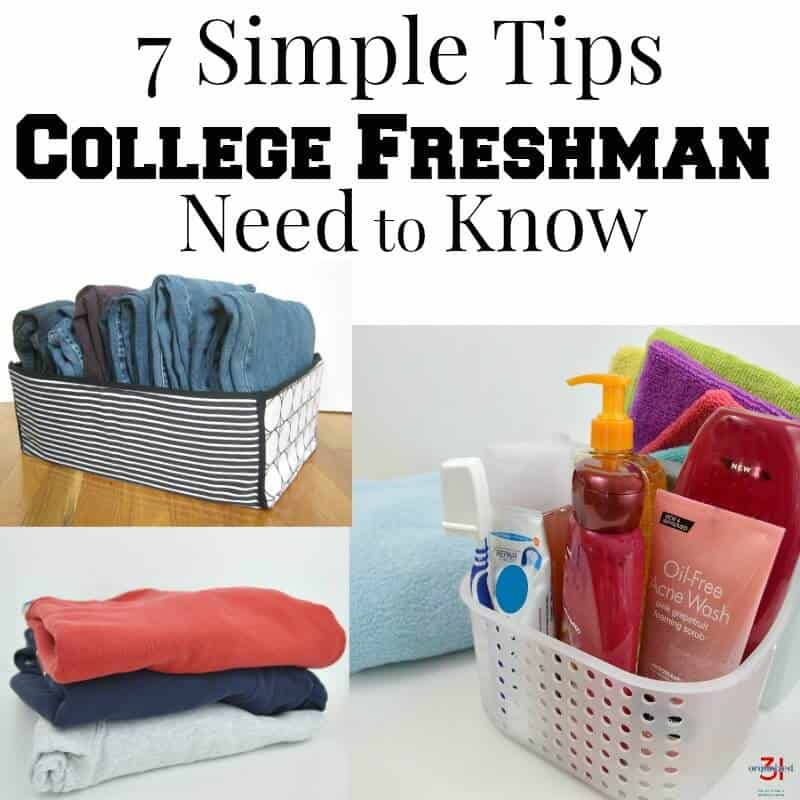
You can find all our best college tips in the table below. You can scroll though the table and look for ideas or search for specific ideas with the magnifying glass in the upper right-hand corner (on desktop). Click on the topic and then click through the specific article.
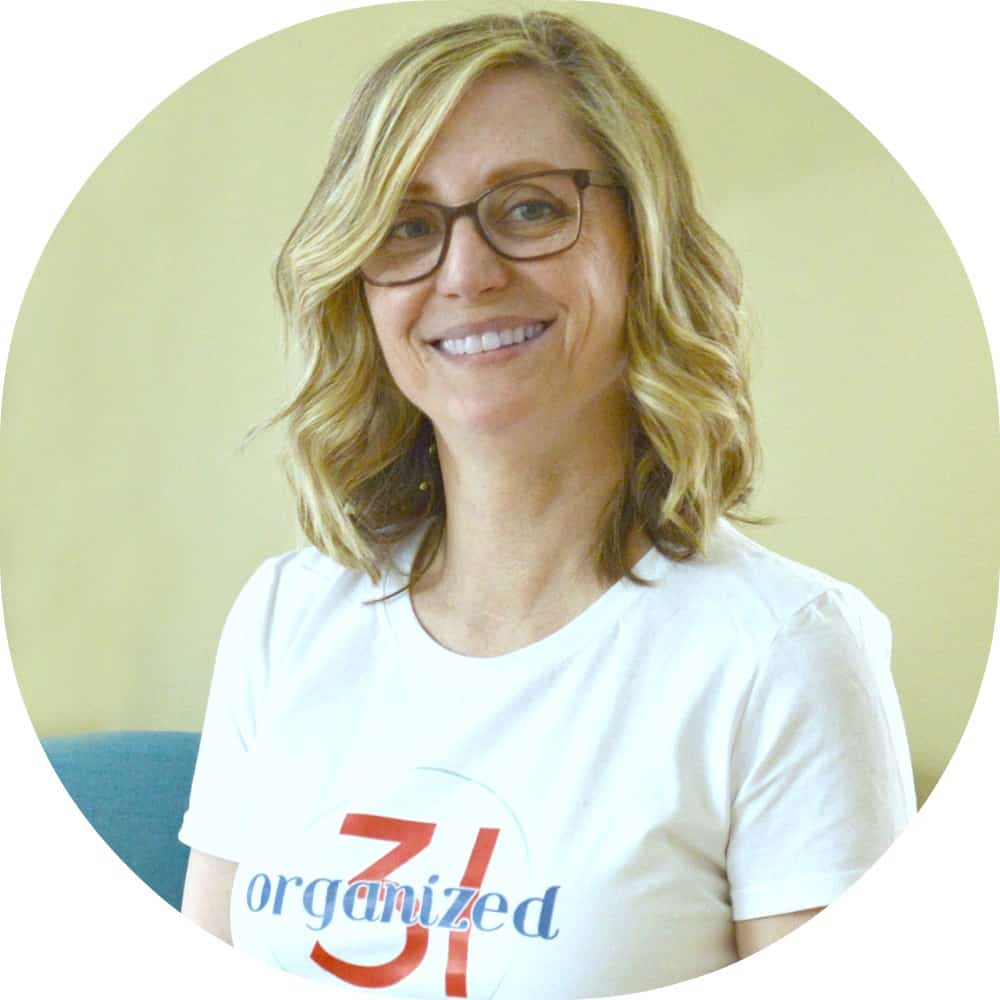
I’m a mom of 3, a veteran, military spouse. I’ve moved into 20+ homes all around the world. My passion is helping busy people make the space and time for what’s really important to them. Learn more about Organized 31 and me.
Similar Posts
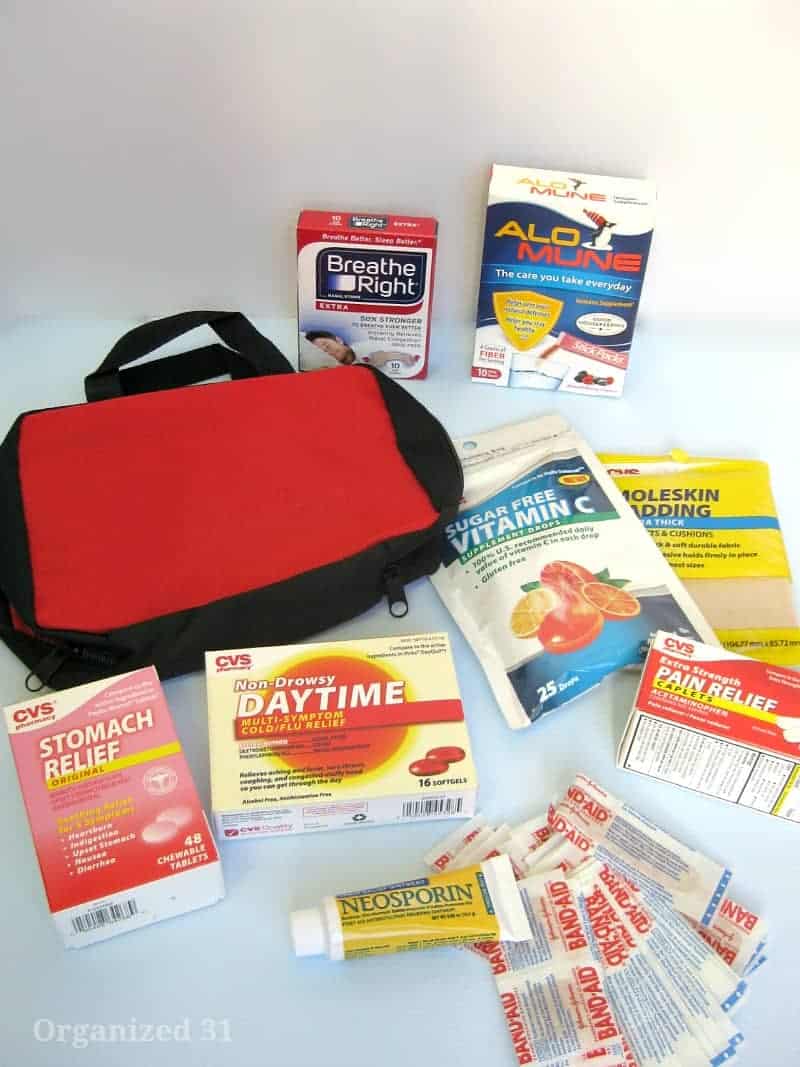
DIY College First Aid Kit
When you’re sending your “baby” away to college, you try to think of everything she might possibly need. With one month to go until I deposit my “baby” on the steps of her college, we’re in full college preparation mode. Just yesterday we put together her diy college first aid kit. The kit that this…
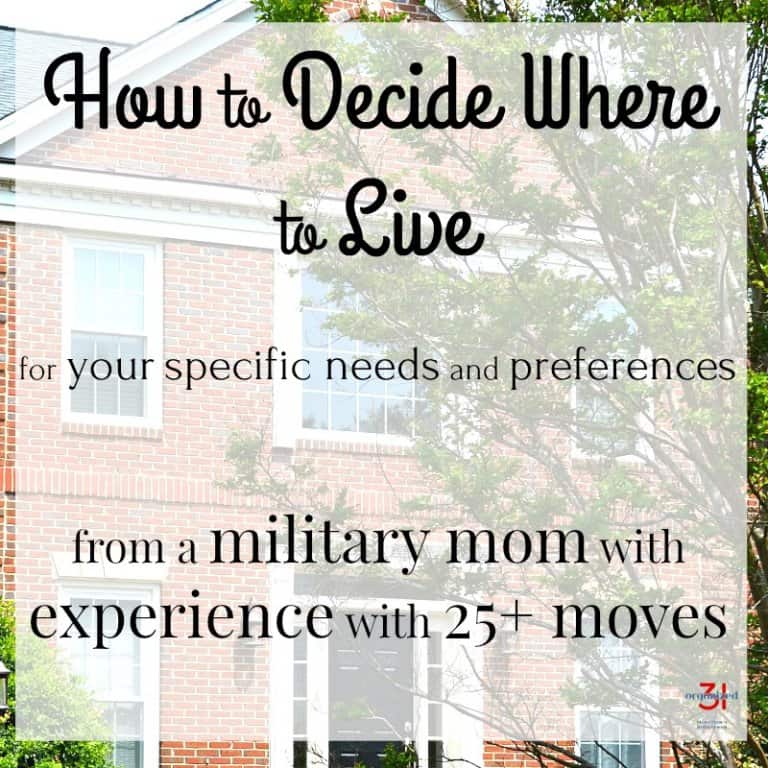
How to Decide Where to Live
How to decide where to live to meet your unique needs & preferences. Free printable worksheets to determine where you should live when you are relocating.

Teaching Children About Saving Money
Teaching children about saving money is one of the critical life skills parents should teach. Use this free printable My Saving Money Chart to help.
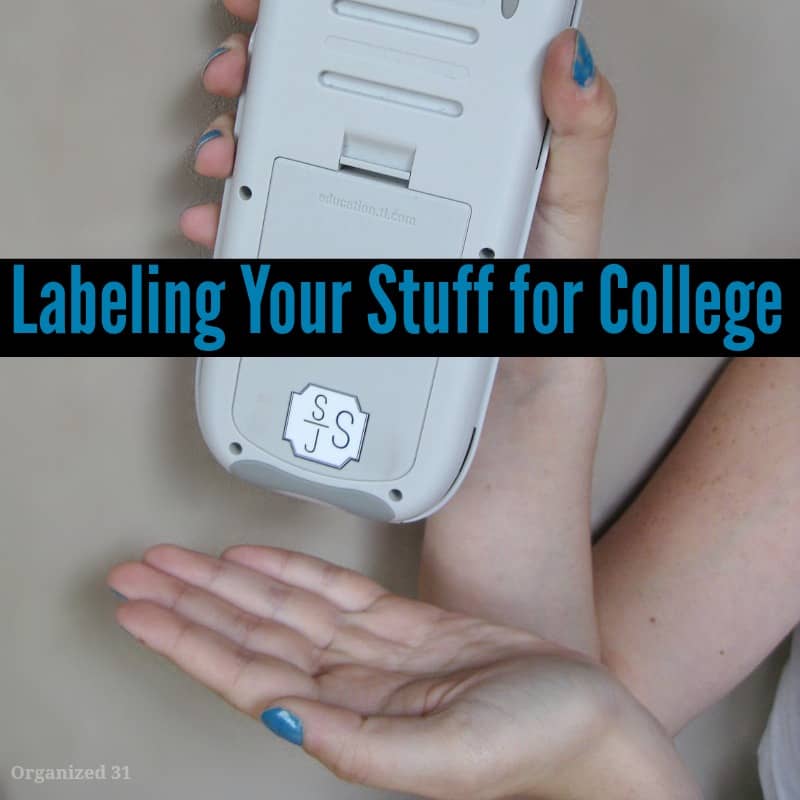
Labeling Your Stuff for College
A professional organizer who sent 3 kids to college, shares best labeling stuff for college tips and 20+ recommendations for custom labels.

Easy Halloween Treats
A free printable makes handing out fun Halloween treats easy (even at the last minute). They’re perfect as party favors, a kid’s activity & to add to gifts.
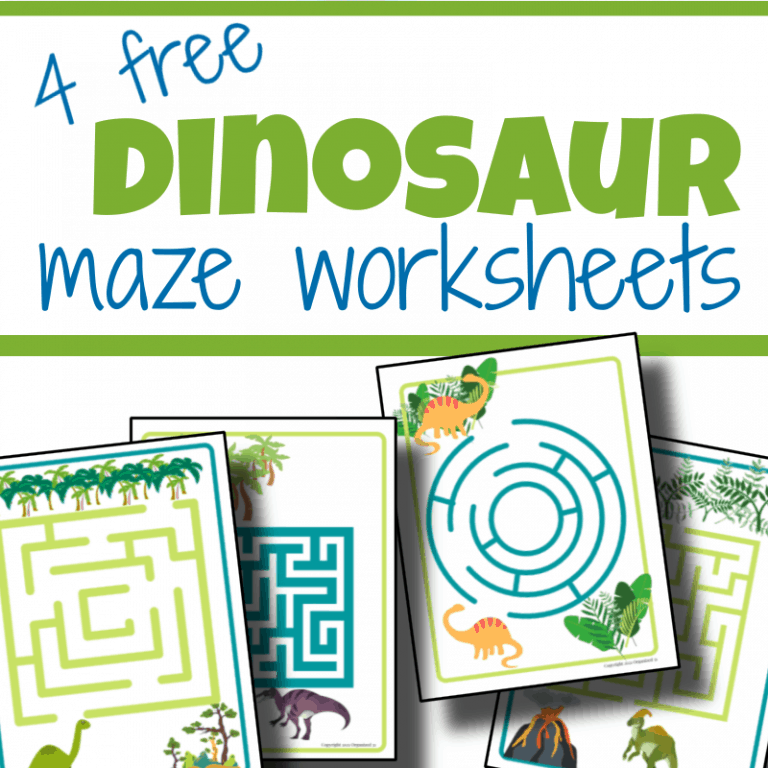
Dinosaur Printable Mazes
Fun worksheets to encourage learning for children of all ages. These 4 free dinosaur printable mazes come in a range of difficulty levels.
You are such a good Mom! Love the folder, love the “clip board” I bet your daughter was happy to have them! College visits are stressful, but it sounds like you were prepared!
Thanks for linking up to the In and Out of the Kitchen party! I am always amazed at your organization skills!
Following the Scout motto- Be Prepared! I hear ya…my daughter is finishing her 2nd yr of college and back when it came time to consider colleges we were stunned she was old enough to graduate and go to college – where was our baby?! Campus visits are important because something can look good on paper (or online) and when you walk through the campus you will usually get an immediate ‘nay’ or ‘yay’ feeling that you should listen to. That tiny voice that says I ‘just don’t feel it here’, or ‘I’m getting a great feeling about this university’! Visiting from the chicken chick. Good luck with the search and upcoming graduation! 🙂 shawn
Shawn, Thanks for the encouragement. It’s such a daunting task! I’ll try to pay closer attention to that “tiny voice.” It’s good to hear that other moms and dads survived kicking their babies out of the nest. 🙂
What a great checklist to keep confusion away. Thank you for sharing this at the Anything Blue Friday party at The Dedicated House. Hope to see you again at the bash! Toodles, Kathryn @TheDedicatedHouse
Hi Susan! This is so clever– but first off, I’m in-love with your blog! I really like that upcycled sweater idea. I just want to add on books and fees, yeah some schools are using e-texbooks with pricey access fees, we need to keep that in mind.
Lisa, thanks for the support! And hadn’t thought about checking the books and fees, but that’s definitely important to consider. Thanks for letting me know.
Hi Susan, my name is Sandra Bugbee my Daughter is 17 and will be Graduating June 2020. We feel like we are flying blind as we have never had to Apply for College in over 30 years and so much has changed. if you could advise as we feel like we have come to the party late. Thank You in Advance Sincerely Sandra A Bugbee
My third “baby” is in his junior year, so I really do understand how overwhelming the college process can be, Sandra. I’ve shared many of our “lessons learned” on the blog. I’ve also collected all my different posts and listed them here on this page – Top Tips for College Success . Let me know if you have any other questions. And enjoy this year with your daughter. It’s a big one for both of you.
Leave a Reply Cancel reply
Your email address will not be published. Required fields are marked *
Save my name, email, and website in this browser for the next time I comment.

How to Plan & Prepare for Your College Visit
When you think about where you want to go to college, you’ll want to consider what it will be like to actually spend your time there, day by day. Does it not only offer the program you want, but also the resources to support it? And what about everything outside of the classroom? What other opportunities are available? Are you comfortable with the social environment, and can you handle the size of the student body? The climate?
One of the most helpful ways to answer these questions is to visit the schools you’re considering. Stepping on campus before you attend is a great way to predict what it would be like to step on campus as a student. A college visit can give you a first-hand experience that will ultimately help you narrow down your choices and find the perfect school for you.
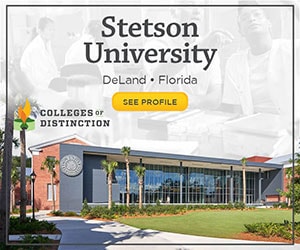
Why Should I Go on a College Visit?
A college visit will give you the chance to get an up-close-and-personal preview of what your future experience at a school could look like. Visits typically include an information session and a tour of the campus itself.
Information sessions provide an overview of a college’s academics and culture—its strengths, resources, and what makes it unique. This is the perfect chance for you to ask questions and learn about the history, traditions, and fun facts that are specific to a school. The campus tour is exactly what it sounds like—you will be shown important locations like the dining halls, library, student union, and examples of classrooms and dorm rooms. It’s the time for you to get a glimpse of the culture—class sizes, clubs and organizations, the quality of the facilities, and the general atmosphere of the school.

If you take full advantage of your visit, you’ll be able to leave with a pretty clear idea of what life as a student looks like. College visits also give your family the opportunity to take part in your selection process. Bringing parents, siblings, or extended family along for the ride allows them to gain an understanding of the environment, provide their input, and share in your excitement! It may also help ease some of their own fears and apprehensions about your potential new home.
A Comprehensive Guide to Making the Most of Your College Visit
Step 1: decide which schools to visit.
Although they’re helpful, college tours can be expensive and time consuming. You might want to narrow down your options if you have a lot of schools on your list of options. Do some research and try to figure out which colleges have the greatest potential of meeting your needs. Much of the academic information you need can usually be found on the college’s official website, but you may want to explore other resources as well. Consider the location, size, cost, and academic programs of each school, then compare all the options on your list and see which ones are worth traveling to.
Questions that you may want to ask:
- Does this college provide the program I may want to study?
- It’s crucial to find a college that offers high-quality programs for your major .
- What’s the likelihood that I will be accepted into this school ?
- If you know this college is a big stretch for you, you will have to decide whether the expense of a visit would be worth it.
- Am I comfortable with the size of this campus?
- Though it definitely varies by school, smaller colleges may provide more one-on-one interactions with the professors and a tight-knit community, while larger colleges may provide more choices of majors, activities, and other opportunities than those with fewer students.
- Where is the college located?
- Do you want to be able to drive home on the weekends, or would you rather stay in a unique environment far from home?
- Do you want to experience an urban environment, or a small, “college-town” life?
- How does climate factor into your decision?
- How much is tuition?
- If you are accepted into a school, the next question to ask is whether you can afford to enroll! This factor can also vary depending on the location of the college; going to a school out of your home state can affect the price of tuition.
- What kind of financial aid can I leverage at this school?
- Although tuition cost may be an issue, you may be able to rationalize the cost with the help of financial aid ( confused about FAFSA? ). Look into your options and determine whether tuition, room, and board will fit within your budget. For more ways to make attending the school of your choice more affordable, check out these guides:
- How to Find—and Win—Scholarships: Your Complete Guide
Hopefully, these considerations can help you keep costs low while still benefiting from something as useful as a college visit . And if you want to visit a certain college but are unable to, check its website to see whether it offers a virtual tour. It may not give you the first-hand experience that an actual visit could provide, but a virtual tour is nevertheless a free, convenient way to see the campus from the comfort of their own homes.
More Guides for Conducting Your College Search
Step 2: Make a Reservation
College visits have limited space, so it’s important to make your reservation early. If you have a desired day and time in mind, you should reserve your spot before it fills up and then make your travel plans accordingly. Will you be able to drive, or do you need to book a flight? Will you need to stay overnight? To make your reservation, visit the college’s website and find the page that is dedicated to prospective students. The webpage will be filled with information about planning and reserving a campus tour, which may need to be done through the website, email, or phone.
Step 3: Prepare Questions for your College Visit
You will learn more than you can remember about your potential colleges during your visit, but it’s so important to do your research first and then come up with any questions or concerns you want to resolve while you are there. Just in case the information you want isn’t automatically part of the campus tour, you should have your must-know questions in mind. And, of course, bring along a notebook to keep track of what you learn. Here’s a handful of questions you might be curious about:
- What is the average class size for courses in my major of interest?
- Are most classes lecture based or discussion based?
- What type of career services do you have?
- Do you have a learning community or other freshman experience?
- Do most freshmen live on campus? What about upperclassmen?
- How is parking on campus?
- What is your four-year graduation rate?
- How do students interact with professors outside of class?
- Do you have any advice on ways to get around campus?
- How do you provide academic advice to students?
- What clubs and organizations do you have on campus?
- How soon can I meet with an admissions advisor?
- What and where are the best places to eat on campus?
- What do students typically do in their free time?
- What facilities are available? (gyms, libraries, etc.)
Step 4: Schedule Your Day
Whether you’re staying for a single day or a whole weekend, your college visit will only last for a limited time. To stay efficient and get the most out of your visit, we recommend that you create a schedule of the activities that are important to you. Carve out time to explore the campus on your own or connect with any current students you know; this will help personalize your experience and give you a more in-depth idea of what student life is like.
If possible, you could also consider attending a class, eating at the dining hall, or spending the night on campus—whatever will help you best understand what’s important to you as a student!
Step 5: Find a Map of Campus
A map can help you find specific areas you want to see, such as the buildings where the majority of your classes will take place in a specific major, athletic facilities you will want to use, or different libraries and study centers. It’s also helpful to know the size and layout of the school beforehand (especially if the campus is large!) to make navigation a little easier and faster while you are there.
Finally, take pictures! The more you document your visit, the easier it will be to reference all your likes and dislikes about the campus.
Get Excited
College visits are an important part of the selection process. What better way to understand student life than by living it yourself? Your experience on campus can make or break your decision, so it’s important to be as prepared as possible to learn everything that’s important to you. With a satisfactory college visit, you can leave each prospective college one step closer to your final decision!
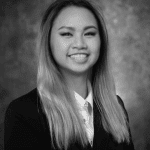
How to Start Your College Search

The 30 Hardest Colleges to Get Into by Acceptance Rate

Your Guide to Required Documents for College Applications
Do you want scholarships and financial aid advice?
Unlock the path to your academic dreams – sign up now for NEW scholarships and timely financial aid advice and stay ahead in the pursuit of higher education!
- Future Student
- Current Student
- Newly Admitted Student
- Parent/Guardian
- Faculty / Staff Member
- Arts and Letters
- Fowler College of Business
- Engineering
- Graduate Studies
- Health and Human Services
- SDSU Library
- Professional Studies and Fine Arts
- Weber Honors College
- SDSU Georgia
- SDSU Global Campus
- SDSU Imperial Valley
- SDSU Mission Valley
Tours & Events
Campus tours and virtual visits.
SDSU offers a variety of in-person campus tour options and virtual visits. If you are registered for an in-person campus tour, please review the Directions & Parking and Public Transportation web pages for help planning your visit.
- Prospective Tour and Presentation
- Walking Tour
- Virtual Presentation
Group Visits
- Specialized Tours
- Self-Guided Tours
Can't make it to a live event? No problem, check out some of our Recorded Sessions below.
Tours and Presentations

Prospective Student Tour with Admissions Presentation (In‑Person)
February 7–april 29, 2022* mondays–fridays, 9:30 a.m..
This two-hour program includes a 30-minute interactive admissions presentation as well as a walking tour of campus. It is designed for prospective undergraduate students who are future applicants, and their families.
Continue to accessible Prospective Student Tour with Admissions Presentation (In‑Person) list .
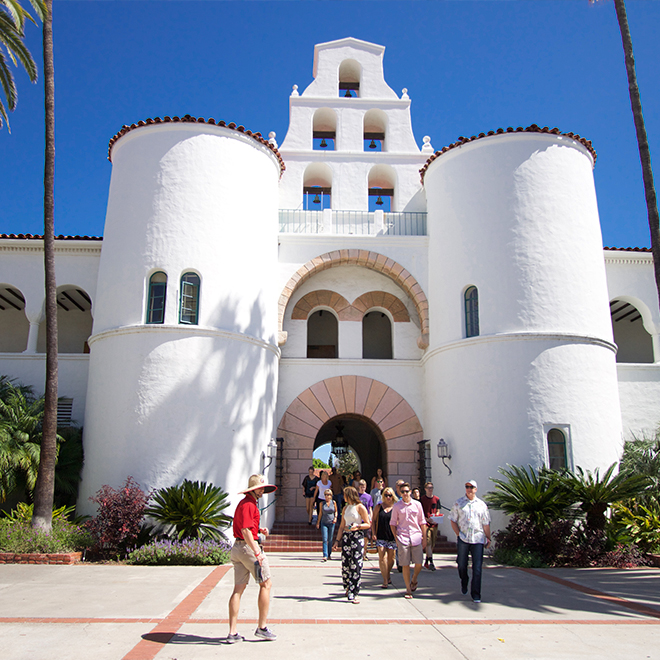
Campus Walking Tour (In‑Person)
This one-hour and 30-minute walking tour of campus is designed for prospective undergraduate students who are future applicants, and their families.
Continue to accessible Campus Walking Tour (In‑Person) list .

Virtual Prospective Admissions Presentation
This program is for prospective undergraduate students and features a live virtual admissions presentation with a question and answer session.
Continue to accessible Virtual Prospective Admissions Presentation list .

Want to discover San Diego State University as a group?
Schedule an In-Person Group Tour or Virtual Admissions Presentation by emailing [email protected] . Keep in mind that your group visit is confirmed once you receive an email approving your request.
We look forward to seeing you!
Request Your Group Visit!

Black Excellence Historical Tour (In‑Person)
Join us on this historical campus walking tour, led by our SDSU student Ambassadors, to reflect upon, honor, and celebrate SDSU's rich African-American history.
Please check back later this summer for tour dates and times.
Continue to accessible Black Excellence Historical Tour (In‑Person) list .

Adelante Tours (In‑Person)
Join us on this walking tour, led by our SDSU Ambassadors, to learn more about the Latinx/Chicano/a/x/Hispanic culture at SDSU.
Continue to accessible Adelante Tours (In‑Person) list .
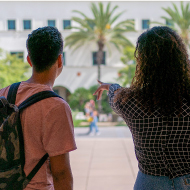
Self-Guided Tour
Unable to reserve a tour on the dates that you are available to visit campus? Use the campus map brochure to guide you on a self-guided tour of campus during a time that works best for you.
Take a Self-Guided Campus Tour.
| Header | Tours and Presentations | ||||||
|---|---|---|---|---|---|---|---|
| Introduction | |||||||
| Image | Title | Subtitle | Body | ||||
| Admitted Undergraduate Student Tour with Admissions Presentation (In‑Person) | This two-hour program includes a 30-minute interactive admissions presentation as well as a walking tour of campus. Because of the information covered in the presentation, this tour is designed for admitted undergraduate students, and their families. Continue to . | ||||||
| Virtual Admitted Admissions Presentation | This program is for admitted undergraduate students and features a live virtual admissions presentation with a question and answer session. Because of the information covered in the presentation, this program is designed for admitted students and their families. Continue to . | ||||||
| Prospective Student Tour with Admissions Presentation (In‑Person) | This two-hour program includes a 30-minute interactive admissions presentation as well as a walking tour of campus. It is designed for prospective undergraduate students who are future applicants, and their families. Continue to . | ||||||
| Campus Walking Tour (In‑Person) | This one-hour and 30-minute walking tour of campus is designed for prospective undergraduate students who are future applicants, and their families. Continue to . | ||||||
| Virtual Prospective Admissions Presentation | This program is for prospective undergraduate students and features a live virtual admissions presentation with a question and answer session. Continue to . | ||||||
| Group Visits | Want to discover San Diego State University as a group? Schedule an In-Person Group Tour or Virtual Admissions Presentation by emailing . Keep in mind that your group visit is confirmed once you receive an email approving your request. We look forward to seeing you!
| ||||||
| Black Excellence Historical Tour (In‑Person) | Join us on this historical campus walking tour, led by our SDSU student Ambassadors, to reflect upon, honor, and celebrate SDSU's rich African-American history.
Continue to . | ||||||
| Adelante Tours (In‑Person) | Join us on this walking tour, led by our SDSU Ambassadors, to learn more about the Latinx/Chicano/a/x/Hispanic culture at SDSU.
Continue to . | ||||||
| Self-Guided Tour | Unable to reserve a tour on the dates that you are available to visit campus? Use the campus map brochure to guide you on a self-guided tour of campus during a time that works best for you.
| ||||||
| Column 1 | Column 2 |
|---|---|
| This two-hour tour is for students who have been admitted to SDSU on an F-1 or J-1 student visa. The tour includes a 45 minute personalized admissions information session followed by a one hour and fifteen minute campus tour. This tour is available for freshman or transfer students who have been admitted to SDSU or fall 2020. March 16 – April 30*
|
| Column 1 | Column 2 |
|---|---|
| This two-hour tour is for students who plan to attend SDSU on an F-1 or J-1 student visa. The tour includes a 45 minute personalized admissions information session followed by a one hour and fifteen minute campus tour. Now–April 30
|
| Column 1 | Column 2 |
|---|---|
| This two-hour tour for out-of-state prospective students includes a 45 minute interactive presentation and a one hour and fifteen minute walking tour of campus including a walk through the residential halls. July 15 – August 16, offered on Mondays, Wednesdays, and Fridays only
|
Virtual Tour
Loading Virtual Tour
Continue to accessible virtual tour .
- Public Transportation
Plan Your Visit
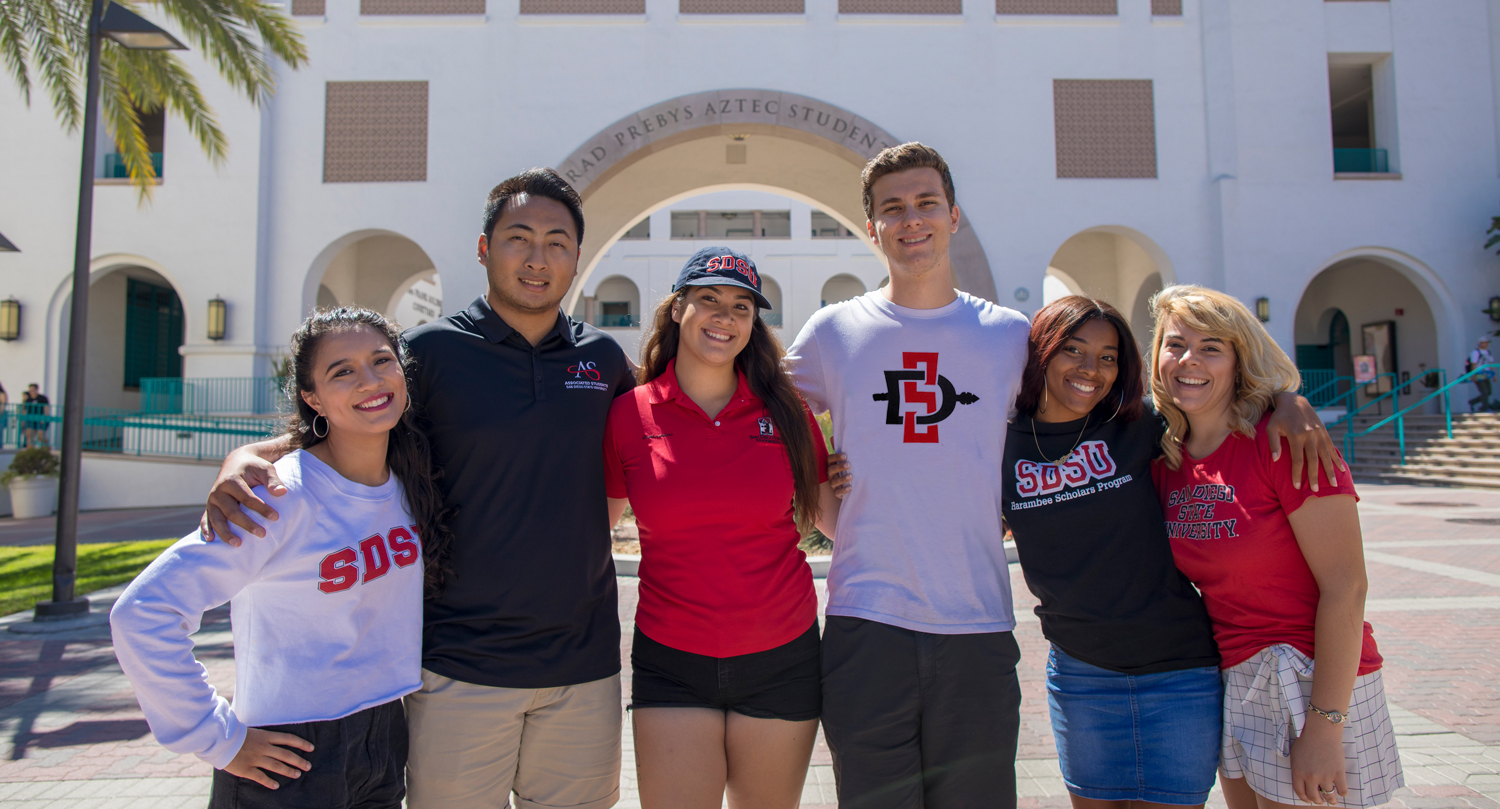
Welcome to SDSU
| the calendars at the bottom of your screen to select your preferred date and time. If you need any assistance, please email [email protected], call 213-740-6605, or chat with us below. School Group and Community Based Organizations can . | |

- For HR & Businesses
- For K-12 Educators
- For Universities & Colleges
- For Tourism
- For Events & Conferences
- For Non-Profits
- For Experience Facilitators
- Lessons from the Chase
- Reviews from Participants
- Company Updates
- Goosechase in the News
- Go to Goosechase.com
College Campus Tour Ideas: 25 Ideas for Getting to Know the Local Community
Planning an incoming class's orientation? Think outside the box...literally. Get students excited about their new campus by exploring the local community just outside it!
What do you think of when you hear campus tour ? We can bet CollegeHumor read your mind - and the minds of the other 5 million people who watched this skit, nodded, and laughed.
The campus tour can get a bit of a bad rap, but it really doesn't have to be that way . Campus tours are essential for getting students familiar with their surroundings and settling them in, but that doesn't mean they have to be basic or uninspired.
Fostering a sense of familiarity and belonging is so important, especially during (huge!) milestones like transitioning from highschools and hometowns to a totally new campus culture. Keep your tour fresh for your freshmen (sorry, couldn't resist) and send them on a wild GooseChase to get to know not just your campus, but its surrounding community.
Use these 25 Missions to get students familiar with the local infrastructure, businesses, and culture that surround your institution and will - sooner than they think! - make it feel like home.
If you're already using GooseChase to run experiences, you can click the button below to copy this scavenger hunt to your account .
Here's a sneak peek...
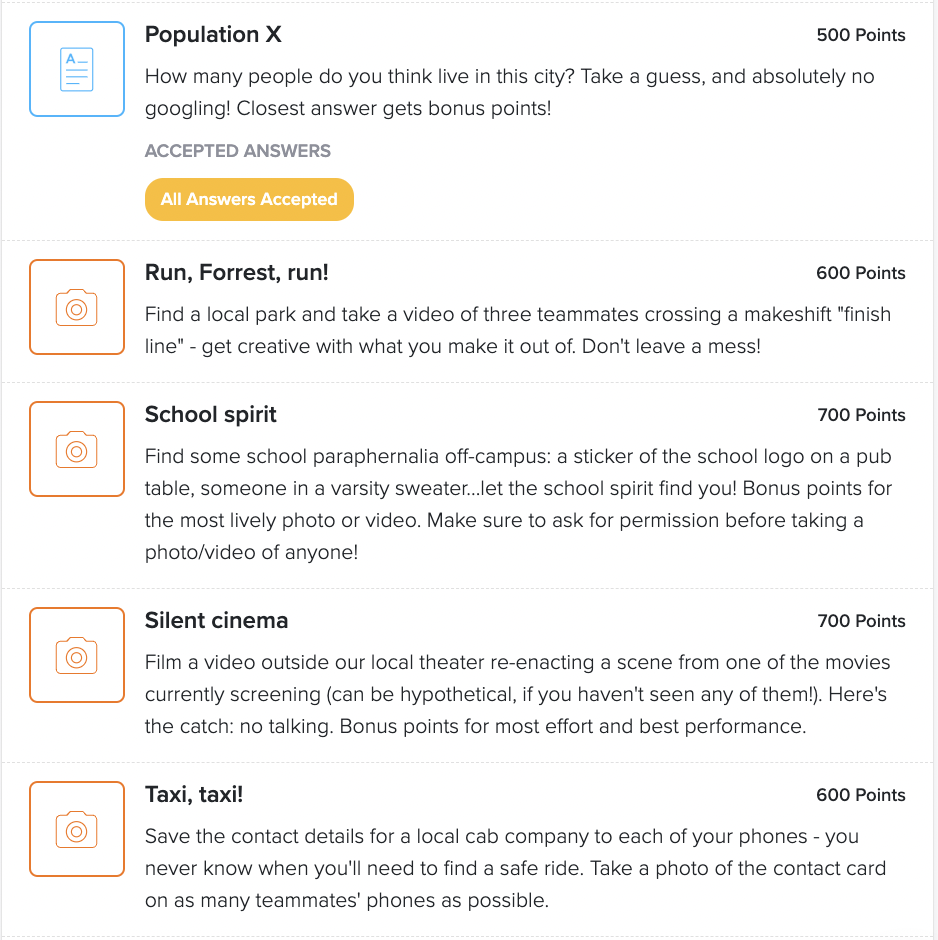
Want to create a fun, engaging game for your community? Take a look at our How It Works page to see how easy it is to get started on GooseChase!
Looking for more inspiration?
- Here's how one campus throws an epic campus tour
- Here are Mission ideas for an on-campus GooseChase
What is GooseChase?
GooseChase is an online platform that helps organizers create and run digital scavenger hunt experiences for team building, learning, public engagement, or a variety of other events. Sign up and try creating a free recreational game, or contact us to learn more about our enterprise solutions!
- Universities & Colleges
- Mission Ideas
- Scavenger Hunt Ideas
Integrated Marketing Manager
Recommended for you

Goosechase Partners with Lilly Conference Series to Revolutionize Academic Conferences

What's a Poker Run? A Unique Idea For Your Next Fundraiser

20 Scavenger Hunt Ideas for Adults
No results for your search, please try with something else.

You are using an outdated browser! Upgrade your browser today or install Google Chrome Frame to better experience this site.
Search form

Click "Menu" to toggle open, click "Menu" again to close
- What Is Public Health?
- Why Accreditation Matters
- Academic Departments
- Administrative Units
- Office of Information Technology
- Financial Affairs and Physical Resources
- Community, Environment & Policy
- Epidemiology and Biostatistics
- Health Promotion Sciences
- Primary Faculty
- Adjunct Faculty
- Strategic Initiatives
- Centers and Institutes
- Diversity and Inclusion
- Dean's Message
- Dean's Strategic Initiatives Fund
- Dean's Students Research Funds
- Standing Committees
- Need a Public Health Intern?
- Declaring the Public Health Major
- How to Apply for Advanced Standing
- Wellness and Health Promotion Practice (BA)
- Public Health Major (BS)
- Online Bachelors (BS)
- Addiction and Substance Use
- Aging and Population Health Minor
- Climate Change and Public Health
- Environmental and Occupational Health Minor
- Global Health Minor
- One Health Minor
- Population Health Data Science Minor
- Public Health Minor
- Wellness and Health Promotion Practice Minor
- Transfer Students
- Global Health
- Public Health Emergency and Epidemic Preparedness
- Safety Certificate
- Online Degree Curriculum
- Curriculum Information for Public Health Coursework
- Registration Tips for Undergraduates
- Internships
- Study Abroad
- Course Schedule
- BS & MPH Environmental & Occupational Health Program
- BS & MPH in Global Health Program
- Academic Policies and Forms
- Student Services Staff
- Student Clubs and Organizations
- Public Health Ambassadors
- Meet Our Students
- Scholarships and Aid
- Academic Achievement
- Dual Degrees
- MS & PhD Programs
- Certificate Programs
- Non-Degree Seeking
- Distance Learning
- Ajman UAE Micro-Campus
- Study Abroad Programs
- Biostatistics
- Environmental Health Sciences
- Epidemiology
- Family and Child Health
- Health Behavior Health Promotion
- Health Services Administration (Phoenix & Tucson)
- Public Health Policy and Management
- Public Health Practice (Phoenix)
- Prospective Students
- Admissions Criteria & Deadlines
- How to Apply
- Admissions Information Events
- Visiting Campus
- International Students
- Tuition & Financial Assistance
- Certificate Program Admissions Criteria
- Online Team Staff
- Admitted Students
- Research Areas
- Research Projects
- Research Resources
- Research Policies
- Deans Annual Fund Application
- Student Research
- Health Services Administration
- Phoenix Campus
- Public Health Policy & Management
- Public Health Practice
- Center for Firefighter Health Collaborative Research
- Center for Health Disparities Research
- Nosotros Program
- One Health Initiative
- Tucson and Pima County
- Arizona and Regional
- National and Multi-State
- International
- Community Engagement and Outreach
- IndigiWellbeing Program
- Phoenix Mobile Health Unit
- Tucson Mobile Health Unit
- Mobile Outreach Vaccination & Education (MOVE-UP)
- Ventanillas de Salud (Windows to Health)
- Rural Health Professions Program
- Street Medicine Phoenix
- Students Reach Out
- Workforce Development
- 20th Anniversary Stories
- Remembering Mel Zuckerman
- Mental Health
- Climate Change and Health
- Indigenous Health
- Digital Epidemiology
- Additional Giving Opportunities
- Ways to Give
- Scholarships
- Community Advisory Board
- Support Delta Omega
- Dean's Circle of Excellence
- Dalen Lecture Series
- Mel & Enid Zuckerman
- James & Priscilla Dalen
- Frank Marcus
- Barry & Janet Lang
- Kent & Liz Campbell
- Meet the Giving Team
- Dean's Annual Fund Application
- Alumni Council
- Host an Event
- Alumni Network
- Alumni Events
- Our Alumni Change the World
- Alumni Giving Circle
- Delta Omega
College representatives visit partner universities in Indonesia to build collaboration
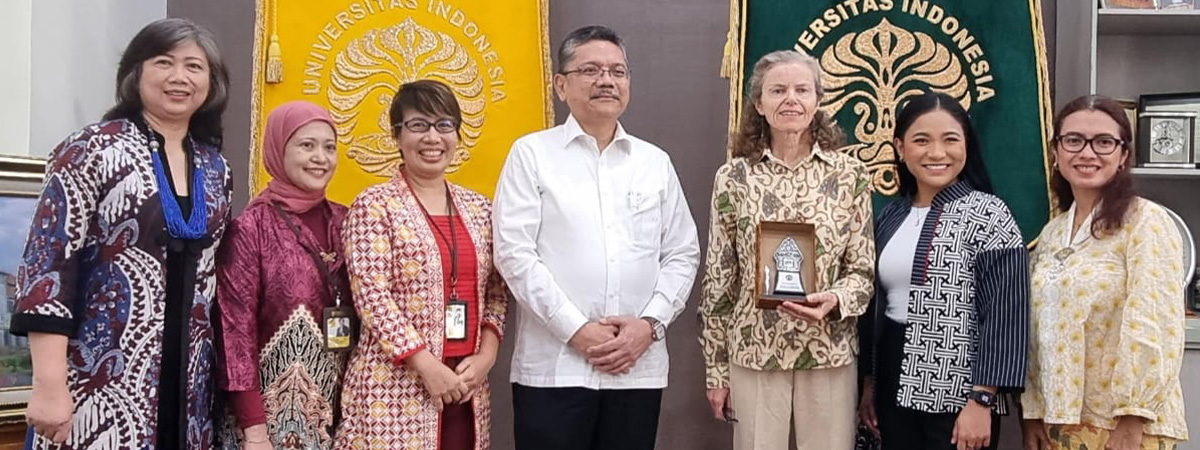
Dr. Priscilla Magrath and MPH student Lady Dorothy Elli from the Zuckerman College of Public Health visited our partner universities in Indonesia, the University of Indonesia and University Jenderal Soedirman, to build on our existing partnerships.
In May 2024, Dr. Priscilla Magrath and MPH student Lady Dorothy Elli, both from the Zuckerman College of Public Health at the University of Arizona, visited two of our partner universities in Indonesia, the Universitas Indonesia (UI) in Jakarta and the Universitas Jenderal Soedirman (UNSOED) in Central Java, to build on our existing partnerships. Both universities already have a Memorandum of Understanding (MOU) with the Zuckerman College of Public Health.
Dr. Magrath, a Medical Anthropologist and Senior Lecturer in the college who has worked extensively on public health in Indonesia, and Lady Dorothy Elli, an MPH student in Global Health, visited the two universities, gave public health presentations, and met with faculty, staff, and students. The visit served to strengthen the existing partnerships and helped expand collaboration with the University of Arizona on public health education and research.
Public Health Presentation
Dr. Magrath and Ms. Elli were invited to give guest lectures at both universities. They developed a presentation titled Understanding Health Beliefs and Values for Improved Health Communication and delivered this presentation on three occasions: twice at UNSOED with public health students and nursing students, and once at UI with medical students. The presentation, which drew on case studies from Indonesia, generated considerable interest and excitement. Each of the three highly interactive presentations were attended by roughly 100 students and faculty both on Zoom and in person.
During the visits, faculty demonstrated a high level of interest in collaborating to expand opportunities in global health through student exchanges, visiting professorships, and collaborative research from both universities.
Applied Practice Experience
The visit also laid the foundation for Lady Dorothy Elli’s Global Health MPH internship project “Assessing levels of stigma towards TB among Health Care Workers: A key component in managing the tuberculosis burden in Indonesia,” an assessment that she has been conducting since May 2024. This assessment will fulfil Ms. Elli’s Applied Practice Experience (APE) requirement for her MPH degree program.
Ms. Elli visited a local health department (Dinas Kesehatan), a local non-profit working on TB (Mentari Sehat Indonesia or MSI), and a village community engagement activity (Pageraji village) all located in the Banyumas region of Indonesia in Central Java.
- Dinas Kesehatan is the local health department responsible for overseeing public health initiatives and services. It works to improve community health through disease prevention, health education, and the implementation of healthcare programs, including efforts to control TB.
- Mentari Sehat Indonesia (MSI) is a non-governmental organization focused on improving public health in Indonesia. In the Banyumas region, MSI conducts community outreach programs to raise awareness about TB, promotes early detection and diagnosis, and supports TB patients through treatment adherence programs. Their efforts include training local health workers, providing educational resources, and facilitating access to medical care for TB patients.
- Desa Pageraji is a village located in the Banyumas region of Central Java, Indonesia. It is a rural area known for its agricultural activities and community-based living. A group of public health students delivered their final presentation on the importance of breastfeeding among mothers in Desa Pageraji. Dr. Magrath and Ms. Elli were invited to this community service event and were impressed by the students’ engaging presentation.
A rewarding visit
Dr. Magrath and Lady Dorothy Elli express their heartfelt gratitude for the warm welcome they received at the universities and communities they visited, and they eagerly anticipate future collaborations. The Zuckerman College of Public Health and our Global Health Institute thank the leadership and faculty at both universities for their hospitality and continued partnership to advance our common global health goals. Together, we are building a healthier world!
UNSOED Public Health students lecture > UNSOED Nursing students lecture >
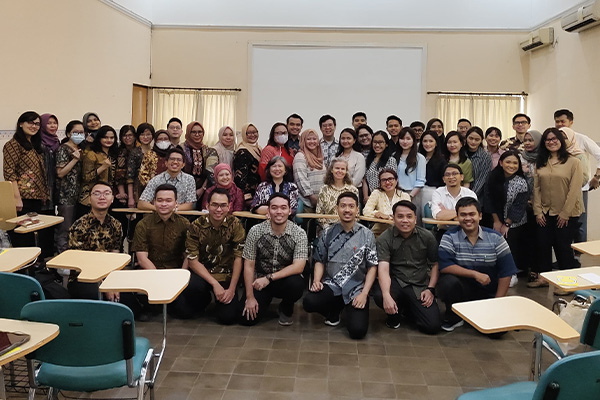
Universitas Indonesia: Residents and lectures of the Community Medicine Department FMUI, who attended in-person.
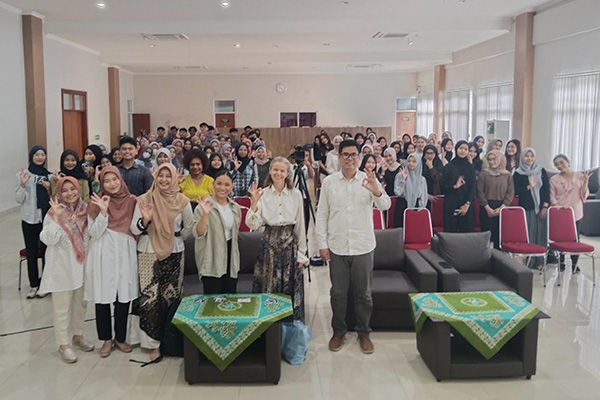
UNSOED guest lecture for public health students with (in front, right to left): Members of the guest lecture committee and Dr. Siwi Wijayanti, Lady Elli, Dr. Priscilla Magrath, and Prof.Dr.sc.hum. Budi Aji, Dean of the faculty of health sciences.
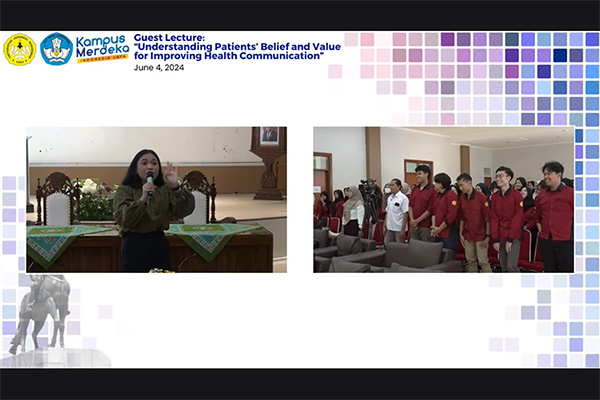
UNSOED: guest lecture for nursing students: Lady Elli presenting case study of TB from Philippines.
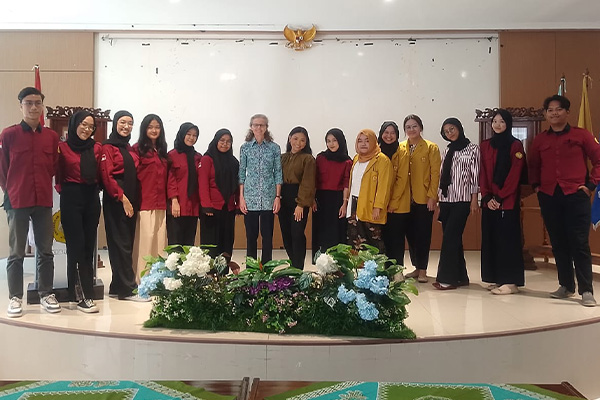
UNSOED: guest lecture for nursing students: selected student participants.

UNSOED visit to local health department, Dinas Kesehatan Kabupaten Banyumas. Head of Communicable Disease Control and Prevention, Arif Burhanudin (4th from left), with his staff, Dr. Priscilla Magrath, and Lady Elli.
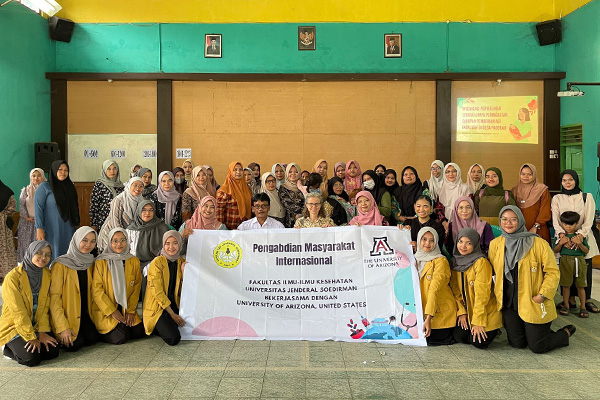
UNSOED community service visit to promote breastfeeding in Pageraji village, Cilongok, Banyumas. The photo shows participants, pregnant women, village head Sutono, SE, lecturers Siwi Pramatama, Leni Maryati, Dr. Arih Diyaning Intiasari, and Public Health students.
Recent News
Media contact.
Shipherd Reed
Director, Communications and Digital Media
520-626-9669
View All News

| The Zuckerman College of Public Health is the only CEPH accredited public health program in Arizona. . |
Tucson - Main Campus | 1295 N. Martin Ave. | Drachman Hall | P.O. Box 245163 | Tucson, Arizona 85724 | Fax Number: 520-626-8009 Phoenix Campus | 550 E. Van Buren Street | UA Phoenix Plaza Building 1 | Phoenix, AZ 85006 The University of Arizona | Tucson, Arizona USA 85721-0036 | Copyright 2024 © Arizona Board of Regents University Privacy Statement
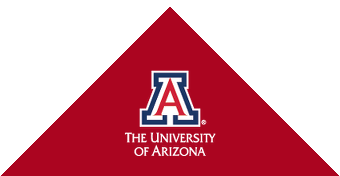
March 14, 2023

Illustration: Ruby Chen
We’ve created GPT-4, the latest milestone in OpenAI’s effort in scaling up deep learning. GPT-4 is a large multimodal model (accepting image and text inputs, emitting text outputs) that, while less capable than humans in many real-world scenarios, exhibits human-level performance on various professional and academic benchmarks. For example, it passes a simulated bar exam with a score around the top 10% of test takers; in contrast, GPT-3.5’s score was around the bottom 10%. We’ve spent 6 months iteratively aligning GPT-4 using lessons from our adversarial testing program as well as ChatGPT, resulting in our best-ever results (though far from perfect) on factuality, steerability, and refusing to go outside of guardrails.
Over the past two years, we rebuilt our entire deep learning stack and, together with Azure, co-designed a supercomputer from the ground up for our workload. A year ago, we trained GPT-3.5 as a first “test run” of the system. We found and fixed some bugs and improved our theoretical foundations. As a result, our GPT-4 training run was (for us at least!) unprecedentedly stable, becoming our first large model whose training performance we were able to accurately predict ahead of time. As we continue to focus on reliable scaling, we aim to hone our methodology to help us predict and prepare for future capabilities increasingly far in advance—something we view as critical for safety.
We are releasing GPT-4’s text input capability via ChatGPT and the API (with a waitlist ). To prepare the image input capability for wider availability, we’re collaborating closely with a single partner (opens in a new window) to start. We’re also open-sourcing OpenAI Evals (opens in a new window) , our framework for automated evaluation of AI model performance, to allow anyone to report shortcomings in our models to help guide further improvements.
Capabilities
In a casual conversation, the distinction between GPT-3.5 and GPT-4 can be subtle. The difference comes out when the complexity of the task reaches a sufficient threshold—GPT-4 is more reliable, creative, and able to handle much more nuanced instructions than GPT-3.5.
To understand the difference between the two models, we tested on a variety of benchmarks, including simulating exams that were originally designed for humans. We proceeded by using the most recent publicly-available tests (in the case of the Olympiads and AP free response questions) or by purchasing 2022–2023 editions of practice exams. We did no specific training for these exams. A minority of the problems in the exams were seen by the model during training, but we believe the results to be representative—see our technical report (opens in a new window) for details.
internal reference 1
We also evaluated GPT-4 on traditional benchmarks designed for machine learning models. GPT-4 considerably outperforms existing large language models, alongside most state-of-the-art (SOTA) models which may include benchmark-specific crafting or additional training protocols:
Many existing ML benchmarks are written in English. To get an initial sense of capability in other languages, we translated the MMLU benchmark—a suite of 14,000 multiple-choice problems spanning 57 subjects—into a variety of languages using Azure Translate (see Appendix ). In the 24 of 26 languages tested, GPT-4 outperforms the English-language performance of GPT-3.5 and other LLMs (Chinchilla, PaLM), including for low-resource languages such as Latvian, Welsh, and Swahili:
We’ve also been using GPT-4 internally, with great impact on functions like support, sales, content moderation, and programming. We also are using it to assist humans in evaluating AI outputs, starting the second phase in our alignment strategy .
Visual inputs
GPT-4 can accept a prompt of text and images, which—parallel to the text-only setting—lets the user specify any vision or language task. Specifically, it generates text outputs (natural language, code, etc.) given inputs consisting of interspersed text and images. Over a range of domains—including documents with text and photographs, diagrams, or screenshots—GPT-4 exhibits similar capabilities as it does on text-only inputs. Furthermore, it can be augmented with test-time techniques that were developed for text-only language models, including few-shot and chain-of-thought (opens in a new window) prompting. Image inputs are still a research preview and not publicly available.
We preview GPT-4’s performance by evaluating it on a narrow suite of standard academic vision benchmarks. However, these numbers do not fully represent the extent of its capabilities as we are constantly discovering new and exciting tasks that the model is able to tackle. We plan to release further analyses and evaluation numbers as well as thorough investigation of the effect of test-time techniques soon.
internal footnote A
Steerability
We’ve been working on each aspect of the plan outlined in our post about defining the behavior of AIs , including steerability. Rather than the classic ChatGPT personality with a fixed verbosity, tone, and style, developers (and soon ChatGPT users) can now prescribe their AI’s style and task by describing those directions in the “system” message. System messages allow API users to significantly customize their users’ experience within bounds (opens in a new window) . We will keep making improvements here (and particularly know that system messages are the easiest way to “jailbreak” the current model, i.e., the adherence to the bounds is not perfect), but we encourage you to try it out and let us know what you think.
Limitations
Despite its capabilities, GPT-4 has similar limitations as earlier GPT models. Most importantly, it still is not fully reliable (it “hallucinates” facts and makes reasoning errors). Great care should be taken when using language model outputs, particularly in high-stakes contexts, with the exact protocol (such as human review, grounding with additional context, or avoiding high-stakes uses altogether) matching the needs of a specific use-case.
While still a real issue, GPT-4 significantly reduces hallucinations relative to previous models (which have themselves been improving with each iteration). GPT-4 scores 40% higher than our latest GPT-3.5 on our internal adversarial factuality evaluations:
We have made progress on external benchmarks like TruthfulQA, which tests the model’s ability to separate fact from an adversarially-selected set of incorrect statements. These questions are paired with factually incorrect answers that are statistically appealing.
The GPT-4 base model is only slightly better at this task than GPT-3.5; however, after RLHF post-training (applying the same process we used with GPT-3.5 ) there is a large gap. Examining some examples below, GPT-4 resists selecting common sayings (you can’t teach an old dog new tricks), however it still can miss subtle details (Elvis Presley was not the son of an actor).
The model can have various biases in its outputs—we have made progress on these but there’s still more to do. Per our recent blog post , we aim to make AI systems we build have reasonable default behaviors that reflect a wide swathe of users’ values, allow those systems to be customized within broad bounds, and get public input on what those bounds should be.
GPT-4 generally lacks knowledge of events that have occurred after the vast majority of its data cuts off (September 2021), and does not learn from its experience. It can sometimes make simple reasoning errors which do not seem to comport with competence across so many domains, or be overly gullible in accepting obvious false statements from a user. And sometimes it can fail at hard problems the same way humans do, such as introducing security vulnerabilities into code it produces.
GPT-4 can also be confidently wrong in its predictions, not taking care to double-check work when it’s likely to make a mistake. Interestingly, the base pre-trained model is highly calibrated (its predicted confidence in an answer generally matches the probability of being correct). However, through our current post-training process, the calibration is reduced.
Risks & mitigations
We’ve been iterating on GPT-4 to make it safer and more aligned from the beginning of training, with efforts including selection and filtering of the pretraining data, evaluations and expert engagement, model safety improvements, and monitoring and enforcement.
GPT-4 poses similar risks as previous models, such as generating harmful advice, buggy code, or inaccurate information. However, the additional capabilities of GPT-4 lead to new risk surfaces. To understand the extent of these risks, we engaged over 50 experts from domains such as AI alignment risks, cybersecurity, biorisk, trust and safety, and international security to adversarially test the model. Their findings specifically enabled us to test model behavior in high-risk areas which require expertise to evaluate. Feedback and data from these experts fed into our mitigations and improvements for the model; for example, we’ve collected additional data to improve GPT-4’s ability to refuse requests on how to synthesize dangerous chemicals.
GPT-4 incorporates an additional safety reward signal during RLHF training to reduce harmful outputs (as defined by our usage guidelines (opens in a new window) ) by training the model to refuse requests for such content. The reward is provided by a GPT-4 zero-shot classifier judging safety boundaries and completion style on safety-related prompts. To prevent the model from refusing valid requests, we collect a diverse dataset from various sources (e.g., labeled production data, human red-teaming, model-generated prompts) and apply the safety reward signal (with a positive or negative value) on both allowed and disallowed categories.
Our mitigations have significantly improved many of GPT-4’s safety properties compared to GPT-3.5. We’ve decreased the model’s tendency to respond to requests for disallowed content by 82% compared to GPT-3.5, and GPT-4 responds to sensitive requests (e.g., medical advice and self-harm) in accordance with our policies 29% more often.
Overall, our model-level interventions increase the difficulty of eliciting bad behavior but doing so is still possible. Additionally, there still exist “jailbreaks” to generate content which violate our usage guidelines . As the “risk per token” of AI systems increases, it will become critical to achieve extremely high degrees of reliability in these interventions; for now it’s important to complement these limitations with deployment-time safety techniques like monitoring for abuse.
GPT-4 and successor models have the potential to significantly influence society in both beneficial and harmful ways. We are collaborating with external researchers to improve how we understand and assess potential impacts, as well as to build evaluations for dangerous capabilities that may emerge in future systems. We will soon share more of our thinking on the potential social and economic impacts of GPT-4 and other AI systems.
Training process
Like previous GPT models, the GPT-4 base model was trained to predict the next word in a document, and was trained using publicly available data (such as internet data) as well as data we’ve licensed. The data is a web-scale corpus of data including correct and incorrect solutions to math problems, weak and strong reasoning, self-contradictory and consistent statements, and representing a great variety of ideologies and ideas.
So when prompted with a question, the base model can respond in a wide variety of ways that might be far from a user’s intent. To align it with the user’s intent within guardrails, we fine-tune the model’s behavior using reinforcement learning with human feedback ( RLHF ).
Note that the model’s capabilities seem to come primarily from the pre-training process—RLHF does not improve exam performance (without active effort, it actually degrades it). But steering of the model comes from the post-training process—the base model requires prompt engineering to even know that it should answer the questions.
Predictable scaling
A large focus of the GPT-4 project has been building a deep learning stack that scales predictably. The primary reason is that, for very large training runs like GPT-4, it is not feasible to do extensive model-specific tuning. We developed infrastructure and optimization that have very predictable behavior across multiple scales. To verify this scalability, we accurately predicted in advance GPT-4’s final loss on our internal codebase (not part of the training set) by extrapolating from models trained using the same methodology but using 10,000x less compute:
Now that we can accurately predict the metric we optimize during training (loss), we’re starting to develop methodology to predict more interpretable metrics. For example, we successfully predicted the pass rate on a subset of the HumanEval (opens in a new window) dataset, extrapolating from models with 1,000x less compute:
Some capabilities are still hard to predict. For example, the Inverse Scaling Prize was a competition to find a metric that gets worse as model compute increases, and hindsight neglect (opens in a new window) was one of the winners. Just like with another recent result, (opens in a new window) GPT-4 reverses the trend:
We believe that accurately predicting future machine learning capabilities is an important part of safety that doesn’t get nearly enough attention relative to its potential impact (though we’ve been encouraged by efforts across several institutions). We are scaling up our efforts to develop methods that provide society with better guidance about what to expect from future systems, and we hope this becomes a common goal in the field.
OpenAI Evals
We’re open-sourcing OpenAI Evals (opens in a new window) , our software framework for creating and running benchmarks for evaluating models like GPT-4, while inspecting their performance sample by sample. We use Evals to guide development of our models (both identifying shortcomings and preventing regressions), and our users can apply it for tracking performance across model versions (which will now be coming out regularly) and evolving product integrations. For example, Stripe has used Evals to complement their human evaluations to measure the accuracy of their GPT-powered documentation tool.
Because the code is all open-source, Evals supports writing new classes to implement custom evaluation logic (opens in a new window) . In our own experience, however, many benchmarks follow one of a few “templates,” so we have also included the templates (opens in a new window) that have been most useful internally (including a template for “model-graded evals”—we’ve found that GPT-4 is surprisingly capable of checking its own work). Generally the most effective way to build a new eval (opens in a new window) will be to instantiate one of these templates along with providing data. We’re excited to see what others can build with these templates and with Evals more generally.
We are hoping Evals becomes a vehicle to share and crowdsource benchmarks, representing a maximally wide set of failure modes and difficult tasks. As an example to follow, we’ve created a logic puzzles (opens in a new window) eval which contains ten prompts where GPT-4 fails. Evals is also compatible with implementing existing benchmarks; we’ve included several notebooks (opens in a new window) implementing academic benchmarks and a few variations of integrating (small subsets of) CoQA (opens in a new window) as an example.
We invite everyone to use Evals to test our models and submit the most interesting examples. We believe that Evals will be an integral part of the process for using and building on top of our models, and we welcome direct contributions, questions, and feedback (opens in a new window) .
ChatGPT Plus
ChatGPT Plus subscribers will get GPT-4 access on chatgpt.com (opens in a new window) with a usage cap. We will adjust the exact usage cap depending on demand and system performance in practice, but we expect to be severely capacity constrained (though we will scale up and optimize over upcoming months).
Depending on the traffic patterns we see, we may introduce a new subscription level for higher-volume GPT-4 usage; we also hope at some point to offer some amount of free GPT-4 queries so those without a subscription can try it too.
To get access to the GPT-4 API (which uses the same ChatCompletions API (opens in a new window) as gpt-3.5-turbo), please sign up for our waitlist . We will start inviting some developers today, and scale up gradually to balance capacity with demand. If you are a researcher studying the societal impact of AI or AI alignment issues, you can also apply for subsidized access via our Researcher Access Program .
Once you have access, you can make text-only requests to the gpt-4 model (image inputs are still in limited alpha), which we will automatically update to our recommended stable model as we make new versions over time (you can pin the current version by calling gpt-4-0314, which we’ll support until June 14). Pricing is $0.03 per 1k prompt tokens and $0.06 per 1k completion tokens. Default rate limits are 40k tokens per minute and 200 requests per minute.
gpt-4 has a context length of 8,192 tokens. We are also providing limited access to our 32,768–context (about 50 pages of text) version, gpt-4-32k, which will also be updated automatically over time (current version gpt-4-32k-0314, also supported until June 14). Pricing is $0.06 per 1K prompt tokens and $0.12 per 1k completion tokens. We are still improving model quality for long context and would love feedback on how it performs for your use-case. We are processing requests for the 8K and 32K engines at different rates based on capacity, so you may receive access to them at different times.
We look forward to GPT-4 becoming a valuable tool in improving people’s lives by powering many applications. There’s still a lot of work to do, and we look forward to improving this model through the collective efforts of the community building on top of, exploring, and contributing to the model.
For more: Read paper (opens in a new window) / View system card (opens in a new window) / Try on ChatGPT Plus (opens in a new window) / Try in Playground (opens in a new window) / Rewatch demo livestream (opens in a new window) / Contribute to OpenAI Evals (opens in a new window)
Example of MMLU questions, translated into other languages. Note, we use consistent choice tokens (A–D):
- Publication
We evaluate this benchmark using Chain-Of-Thought prompting with 4 examples from the training set in-context. The specific prompt was tuned on the validation set.
P. Arredondo (Casetext/Stanford CodeX), D. Katz (Stanford CodeX), M. Bommarito (Stanford CodeX), S. Gao (Casetext). Further analysis is available in the paper (opens in a new window) .
Acknowledgments
View GPT-4 contributions
Related articles


- SUGGESTED TOPICS
- The Magazine
- Newsletters
- Managing Yourself
- Managing Teams
- Work-life Balance
- The Big Idea
- Data & Visuals
- Reading Lists
- Case Selections
- HBR Learning
- Topic Feeds
- Account Settings
- Email Preferences
How to Make a “Good” Presentation “Great”
- Guy Kawasaki

Remember: Less is more.
A strong presentation is so much more than information pasted onto a series of slides with fancy backgrounds. Whether you’re pitching an idea, reporting market research, or sharing something else, a great presentation can give you a competitive advantage, and be a powerful tool when aiming to persuade, educate, or inspire others. Here are some unique elements that make a presentation stand out.
- Fonts: Sans Serif fonts such as Helvetica or Arial are preferred for their clean lines, which make them easy to digest at various sizes and distances. Limit the number of font styles to two: one for headings and another for body text, to avoid visual confusion or distractions.
- Colors: Colors can evoke emotions and highlight critical points, but their overuse can lead to a cluttered and confusing presentation. A limited palette of two to three main colors, complemented by a simple background, can help you draw attention to key elements without overwhelming the audience.
- Pictures: Pictures can communicate complex ideas quickly and memorably but choosing the right images is key. Images or pictures should be big (perhaps 20-25% of the page), bold, and have a clear purpose that complements the slide’s text.
- Layout: Don’t overcrowd your slides with too much information. When in doubt, adhere to the principle of simplicity, and aim for a clean and uncluttered layout with plenty of white space around text and images. Think phrases and bullets, not sentences.
As an intern or early career professional, chances are that you’ll be tasked with making or giving a presentation in the near future. Whether you’re pitching an idea, reporting market research, or sharing something else, a great presentation can give you a competitive advantage, and be a powerful tool when aiming to persuade, educate, or inspire others.
- Guy Kawasaki is the chief evangelist at Canva and was the former chief evangelist at Apple. Guy is the author of 16 books including Think Remarkable : 9 Paths to Transform Your Life and Make a Difference.
Partner Center
This is Khoury College
Computer science for everyone — benefitting all..
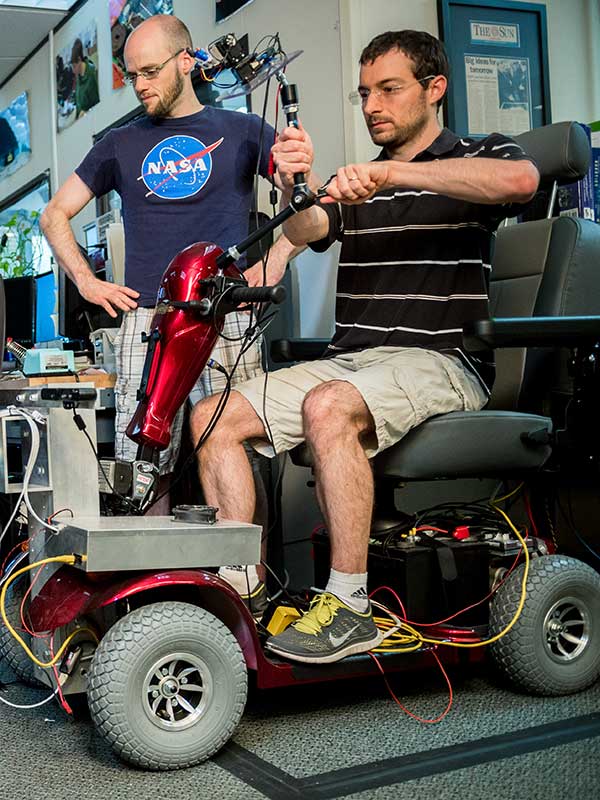
At Khoury College of Computer Sciences, we believe computer science is for everyone — with the power to make the world a better place . That’s why we design flexible programs, grounded in rigor, opportunity, and experience. It’s why we collaborate with industry and community partners on the technologies that shape our collective future. And it’s why we seek curious thinkers with diverse backgrounds, because multiple perspectives lead to life-changing discoveries. Ready to call Khoury home?
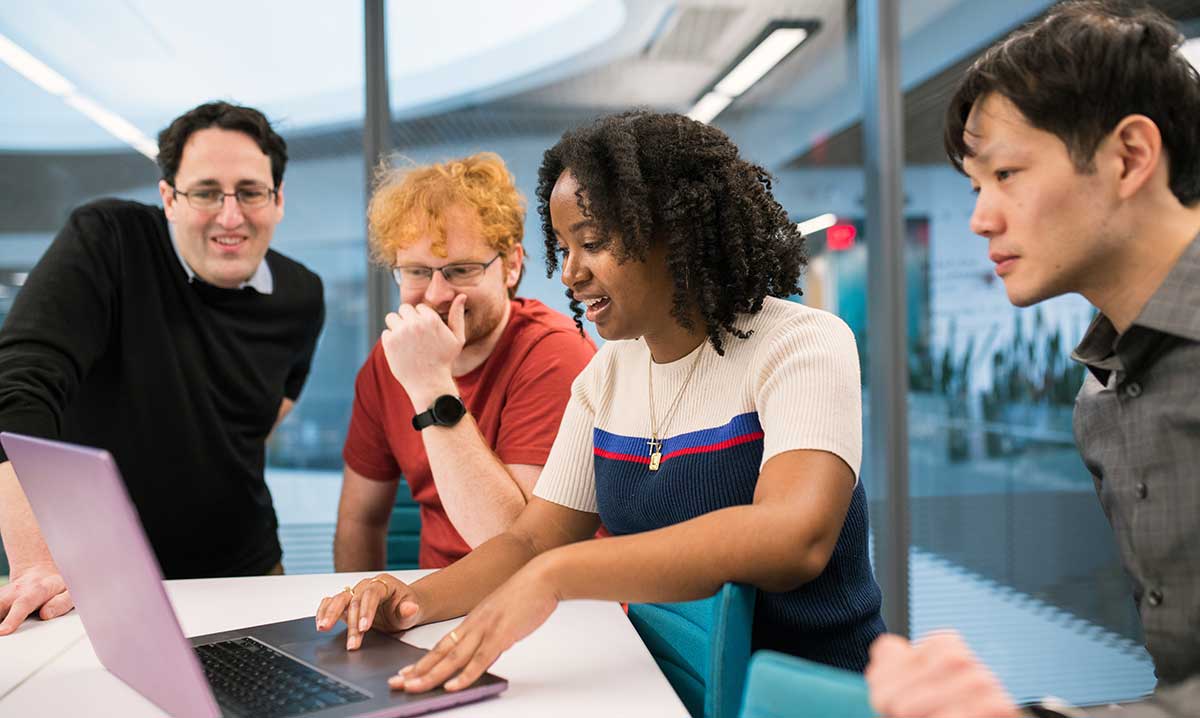
Diversity, Equity, Inclusion, Accessibility, and Belonging
We embrace and empower curious problem solvers from diverse backgrounds — because multiple perspectives lead to the innovative solutions we need for society’s biggest challenges.
Practical Education, Real-World Preparation
We’re known for flexible, innovative programs designed to help every student reach their unique goals — through industry co-ops, interdisciplinary programs, and research opportunities..
Cutting-Edge Research
Every day, our leading researchers and talented students collaborate in world-class facilities to make new discoveries and create equitable opportunities across industry and society.
Global Campuses
With locations in technology hubs around the world, including our main campus in the heart of Boston, our students and faculty work across a global network — living and learning where the action is.
Leading Industry Partners
We partner with more than 800 industry and community leaders around the world — empowering our students and faculty to make meaningful contributions, solve complex problems, and learn through hands-on experience.
Supportive, Creative People
Our world-class faculty, leading researchers, experienced staff, and talented students are the heart of Khoury. Together, they are preparing the problem solvers of today and the thought leaders of tomorrow to tackle the challenges of our times.
Khoury Statistics
48 undergraduate combined majors, 9 master’s programs, 805 co-op partners, 9 campus locations with 190 faculty, khoury stories, meet andrea grimes parker.
From her earliest undergraduate days through her joint faculty appointment years later, Andrea Grimes Parker embraced Khoury College’s interdisciplinary approach. In the process, she built a robust research resume in her chosen field of human-computer interaction.
Meet Marvin Sagastume
Marvin Sagastume found himself drawn to Northeastern by Khoury College’s combined majors, giving him the opportunity to blend his computing passion with something wider. Now at Outcomes4Me, he’s doing just that by helping to develop a user-friendly information platform for cancer patients.
Meet Becky Mashaido
For Becky Mashaido, the draw of Align was straightforward — a master’s program in computing that offered access to San Francisco’s tech pioneers, but did not require an undergraduate CS degree. And after finding a unique and uplifting sense of community there, she made it her mission to uplift others.
Meet Glen Coppersmith
When Glen Coppersmith graduated from Northeastern in 2004, he did so with a CS–psychology double degree that was highly unusual at the time. Two decades later, he’s carved out a career by strengthening the quantity, quality, and utility of data for mental health treatment.
Meet Katie Lowen
For a time, Katie Lowen was touring internationally as a contemporary dancer. But when the pandemic closed down theaters, she sought another avenue to develop herself. Now, earning her master’s in computer science through the Align program in Vancouver, Katie finds herself immersed in a career path she’d never imagined.
Meet Mani Sundaram
When he came from India to the United States for graduate school with only enough money for a one-way flight, Mani Sundaram landed at Northeastern purely by accident. But everything that has happened since then — from his startup work to his internet security leadership to his drive to give back — has been very much intentional.
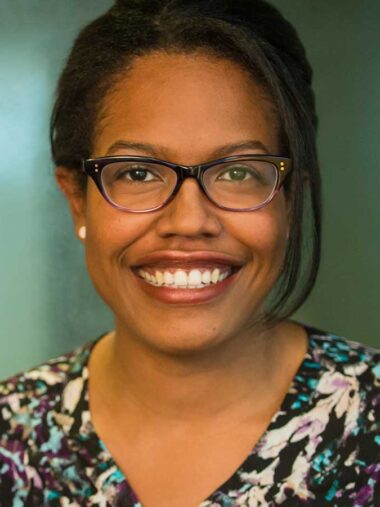
Trending at Khoury

This tool finds errors in code and suggests how to fix them
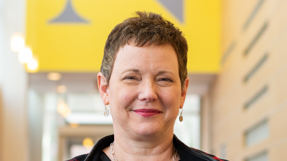
Times Higher Education: Computer science students must be taught to consider social effects
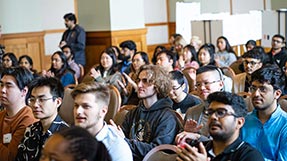
Inside the Spring 2024 Khoury Research Apprenticeship Showcase

NGN: Northeastern computer scientist receives prestigious early-career award for game design research
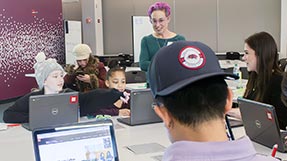
Khoury College hosts beginner coding workshop for local girls
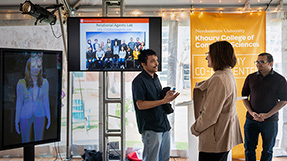
Faculty hiring: Join our growing team across a network of campuses

Khoury Social

Contact Khoury
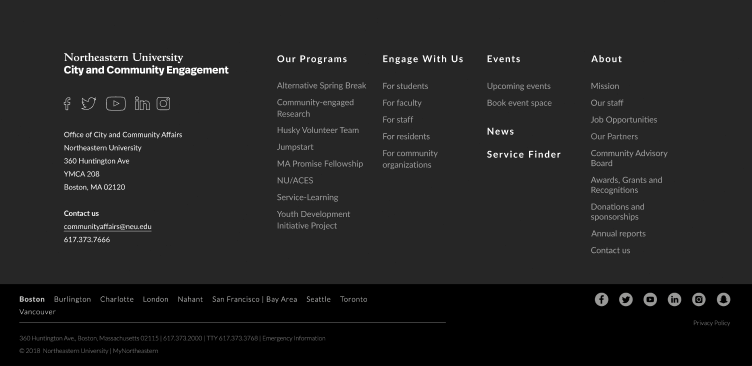

IMAGES
VIDEO
COMMENTS
And you can plan your own informal visit to a college campus. Take these important steps first: Visit the college's admissions website to get details about arranging for an in-person visit. Check with your school counselor to see if any campus tours are scheduled. Set aside time to be on your own. Walk around the public area.
Before a campus visit, students should do basic research on the school. Students and their families have various opportunities to ask questions. No question is dumb. College visits, whether in ...
Gather Basic Information: Start your preparation by researching the college's size, academic programs, student-to-faculty ratio, campus setting, and overall culture. This foundational knowledge will help you focus your visit. Understand Admission Requirements: Familiarize yourself with the admissions process, deadlines, and required documents. Knowing these details will allow you to ask ...
Info Sessions: This is something that is traditionally done before on-campus tours, but colleges have transitioned these online as well. This can be attached to a virtual tour or solo. Typically, this is a 15-30 minute overview of a college - everything from academics, admissions, student life, and more. Virtual & Live Tours: Many colleges ...
Attend a concert or presentation - many schools host events that are free and open to the public; check the calendar in advance to see if anyone interesting is coming to town. Stroll the local neighborhood - whether you're surrounded mostly by trees or a quaint downtown scene, it's helpful to get a feel for what your college ...
The College Board recommends spring of junior year as a good time to visit campuses for students who have already done the research on those colleges. College visits are a good use of downtime ...
Ask about the best times to visit. 3. Take Your Own Tour. Wandering around the campus on your own or with friends can be the best way to get a feel for the college. 4. Explore the College's Facilities. Talk to students to find out the best places to eat and have lunch there. Visit the library.
Virtual campus tours will typically allow you to click on notable buildings and either read more information or hear a pre-recorded tour guide speak about them. It's easy to skip through these if you're speeding through the tour, but take the time to slow down. The context and history behind buildings can be fascinating, and it's also ...
First-Time Freshmen who have completed (1) will be admitted to the college when meeting one of the following requirements: A student having a minimum high school cumulative GPA of 2.75 out of a 4.0 GPA. A student having a minimum ACT composite score of 20 out of 36. A student having a minimum SAT composite score of 1040 out of 1600.
Take the free CollegeScore™ Quick Assessment to find out! College campus visits can help you and your family decide where you will invest your time, money, and efforts over the next four years of your life. Here are 25 tips for how to have a great college visit that is smooth, informative, and even fun.
4. Be Standing. Even though your audience cannot see you, stand when you present. This allows you to stay focused and use good presentation delivery skills such as belly breathing, vocal variety, and pausing. 5. Be Prepared. Practice delivering your presentation with your technology in advance of your talk.
Spirituality. News and Events. As of October 31, 2023, Presentation College has ceased educational operations at the Aberdeen, SD campus. St. Ambrose University (SAU) is the contact for all student information. Please reference these web-pages for additional information. If you would like to request a transcript, you may contact the.
Here are some things you might want to consider before (and during) your campus visits. Take a campus tour. Schedule an interview with an admissions officer. Sit in on a class that interests you. Have lunch in the dining hall (Most admissions officers can give you a voucher to enjoy a free lunch on campus)
Most high schools allow for, at least, a few absences in the junior and senior year for college visits. 3. Make a plan. If you have nearby schools on the list, take day trips. Use longer breaks for schools that are farther away and, obviously, group nearby schools together. If you're planning to drive to school visits and your child has a ...
At the beginning of your college search, a virtual tour can be a beneficial tool to explore the campus before your visit. When you do visit the campus, be sure to talk to current students about their experiences. A student perspective is a helpful way to gauge your future experience when attending Presentation College.
While writing out a script can help you prepare, you shouldn't follow it word for word. Use images and text in your slides to remind you of key points you want to mention. You can also use note cards to prompt you along the way. Check. Make Eye Contact. Try to connect with your audience, not just your slides or notes.
College Visit Checklist. Using a prepared college visit worksheet helps your student pay attention during the visit and focus on what's important. It also helps her ask specific questions if topics important to her are not covered in the presentation. There's also room to add information that we didn't anticipate (which was a lot!).
Step 1: Decide Which Schools to Visit. Although they're helpful, college tours can be expensive and time consuming. You might want to narrow down your options if you have a lot of schools on your list of options. Do some research and try to figure out which colleges have the greatest potential of meeting your needs.
This two-hour program includes a 30-minute interactive admissions presentation as well as a walking tour of campus. It is designed for prospective undergraduate students who are future applicants, and their families. Continue to accessible Prospective Student Tour with Admissions Presentation (In‑Person) list. PrevNext.
Freshman admissions virtual sessions for high school students are on Thursdays at 3pm. Current college students looking to transfer to UC Berkeley should select a session on Tuesdays at 3pm. In-person presentations are available each weekday except Wednesdays. Please read the title, description, and time when signing up. If the date you are ...
Use the calendars at the bottom of your screen to select your preferred date and time.If you need any assistance, please email [email protected], call 213-740-6605, or chat with us below.
Schedule a Visit at Pitt, and find opportunities to do college your way. With in-person and virtual program options to answer why Pitt is a good fit. ... The presentation will be given by a Pitt Admissions Counselor and the tour following will be led by one of our Pitt Pathfinders, our incredible student tour guides who are a wealth of ...
Mia David. Integrated Marketing Manager. Get students excited about their new campus by exploring the local community and businesses just outside it. Here are 25 fun ideas to get them started.
The visit served to strengthen the existing partnerships and helped expand collaboration with the University of Arizona on public health education and research. Public Health Presentation. Dr. Magrath and Ms. Elli were invited to give guest lectures at both universities.
High school visits are when college counselors come directly to your school to meet with you. These visits are perhaps the most individualized face-to-face time you'll get with a counselor prior to applying because the visit volume is smaller. Often, the visits are just the college counselor and a group of 5-8 students.
We've created GPT-4, the latest milestone in OpenAI's effort in scaling up deep learning. GPT-4 is a large multimodal model (accepting image and text inputs, emitting text outputs) that, while less capable than humans in many real-world scenarios, exhibits human-level performance on various professional and academic benchmarks.
A visit to Midhurst Rother College for society. ... After the presentation, Mr Edwards took us on a tour of the school. For information about Midhurst Society talks and events visit our website.
A strong presentation is so much more than information pasted onto a series of slides with fancy backgrounds. Whether you're pitching an idea, reporting market research, or sharing something ...
At Khoury College of Computer Sciences, we believe computer science is for everyone — with the power to make the world a better place. That's why we design flexible programs, grounded in rigor, opportunity, and experience. It's why we collaborate with industry and community partners on the technologies that shape our collective future.